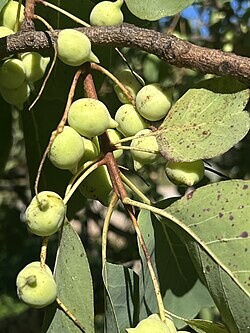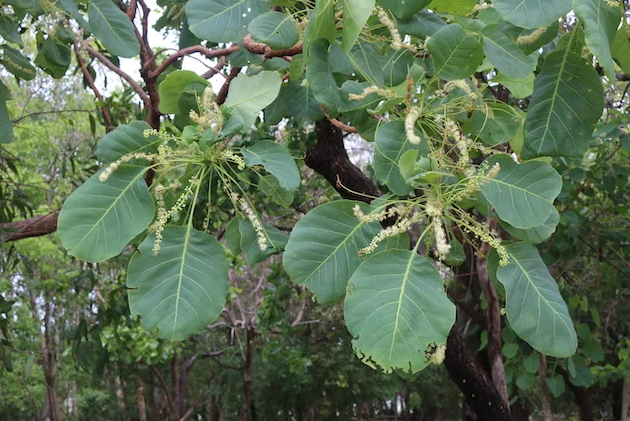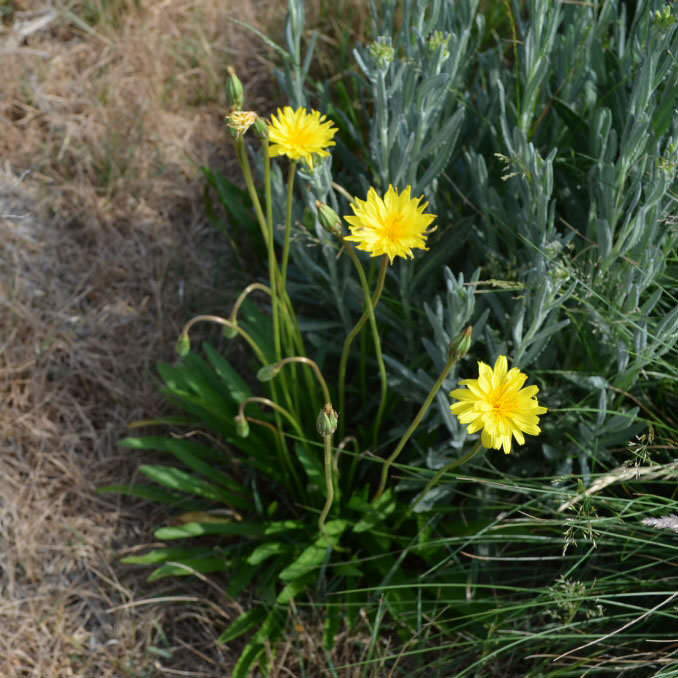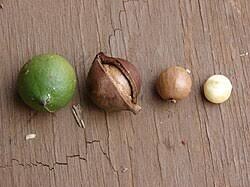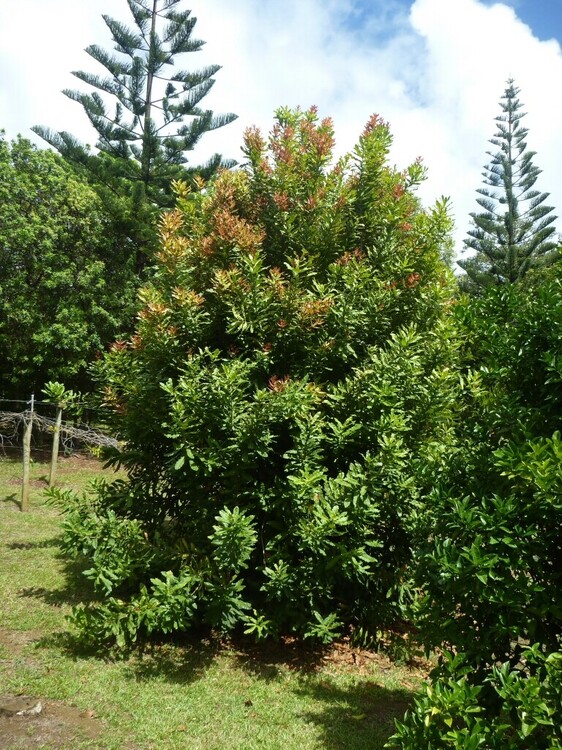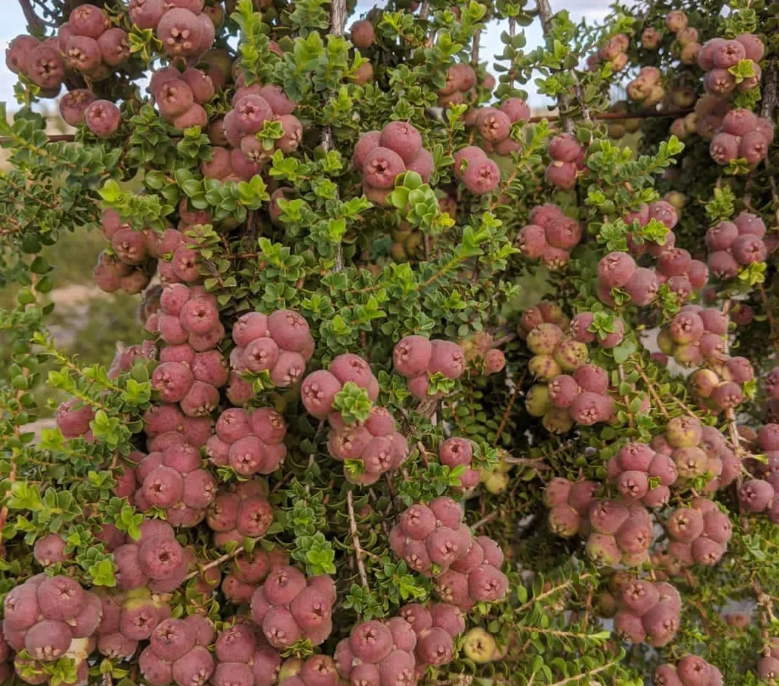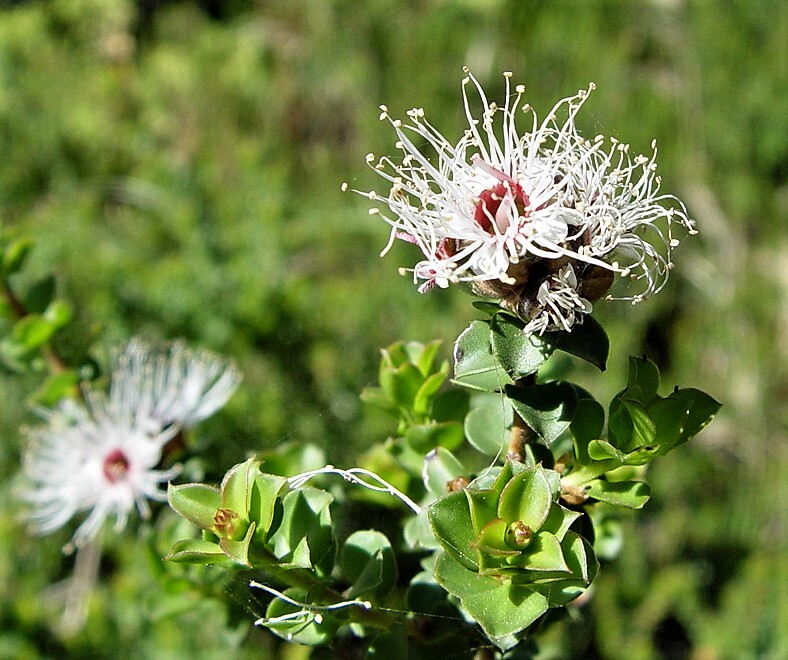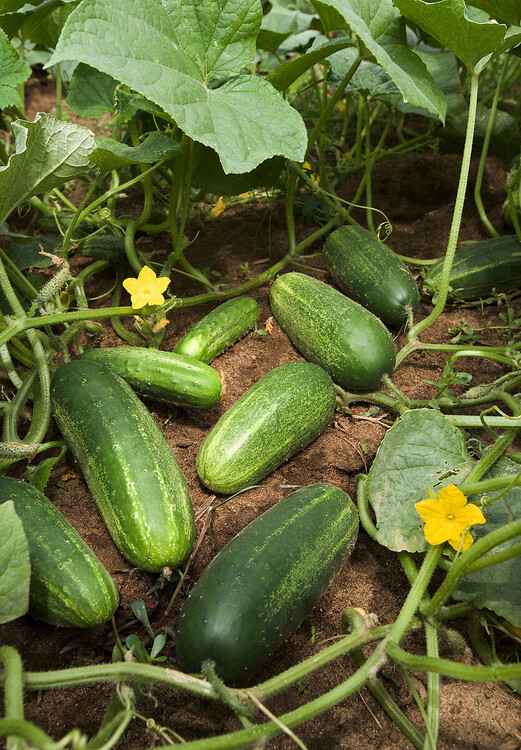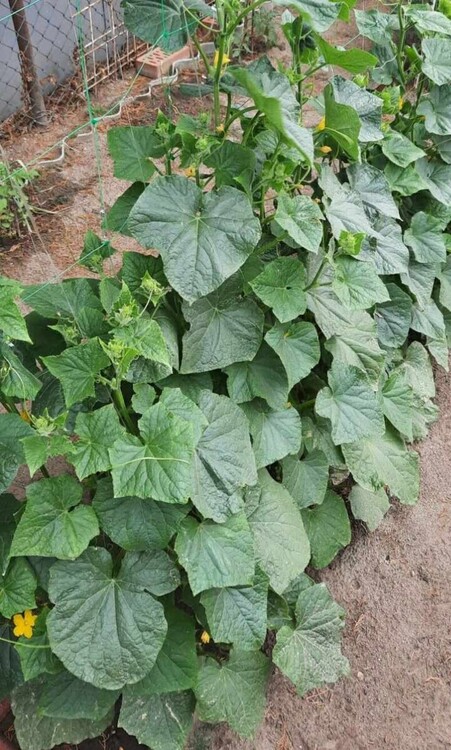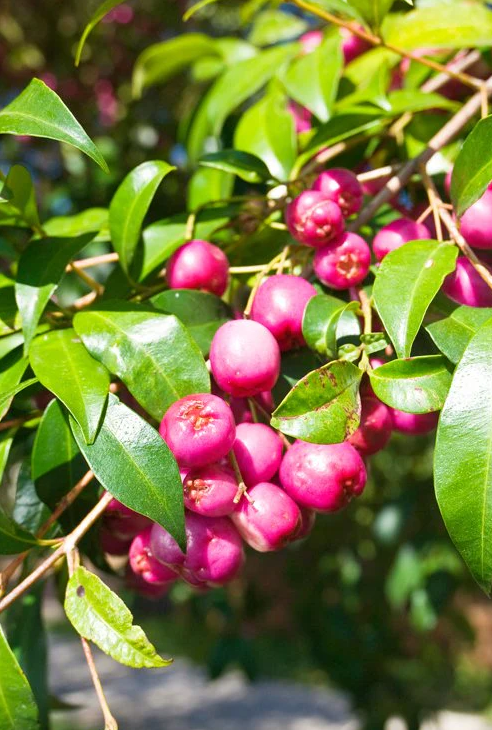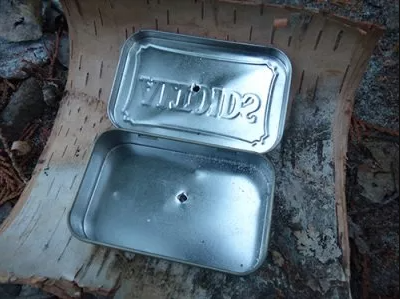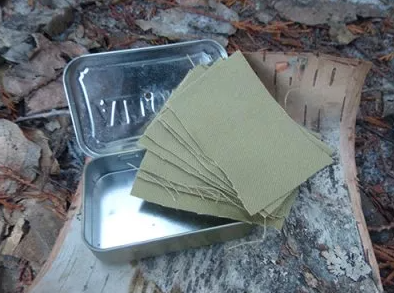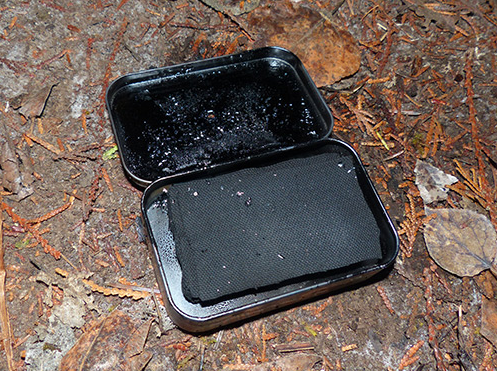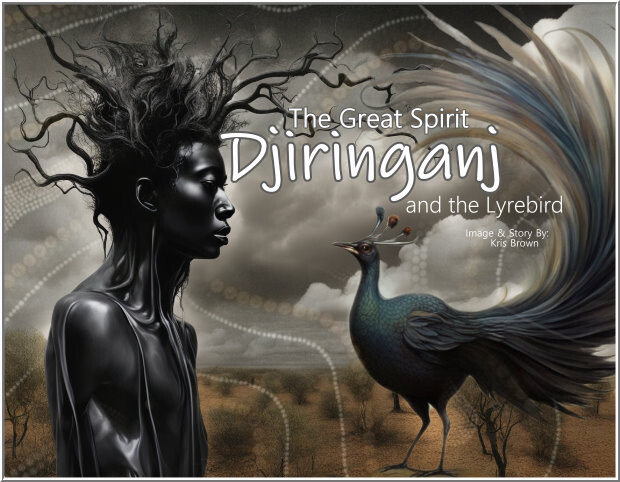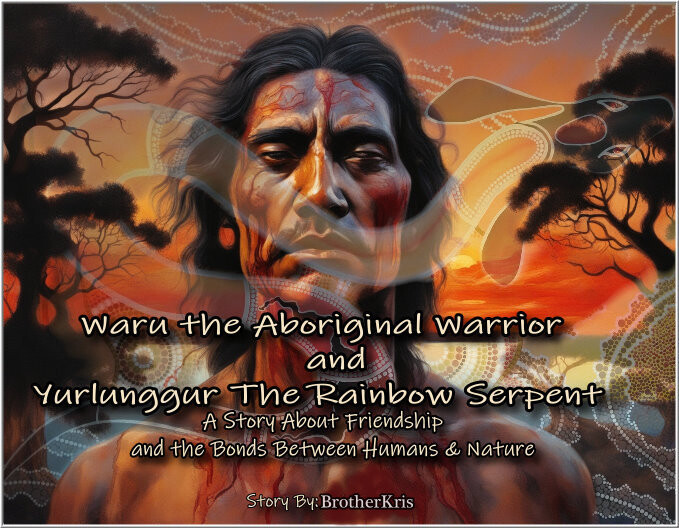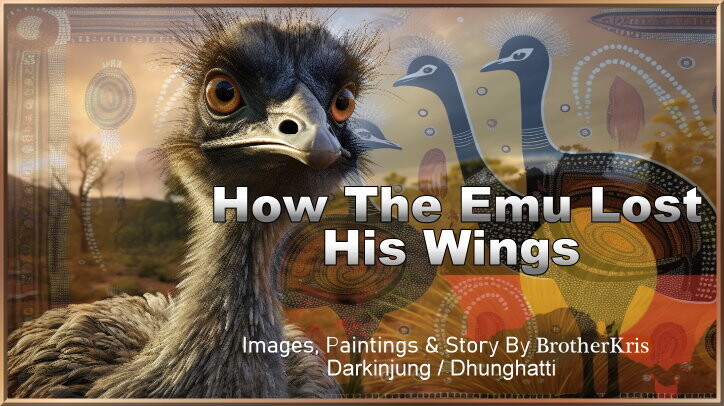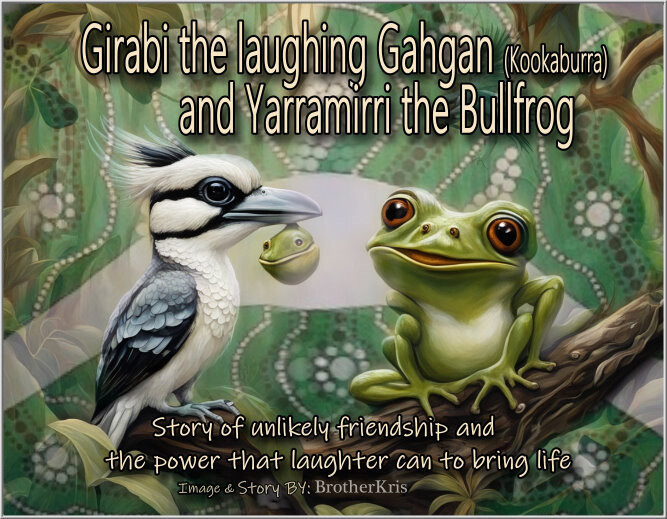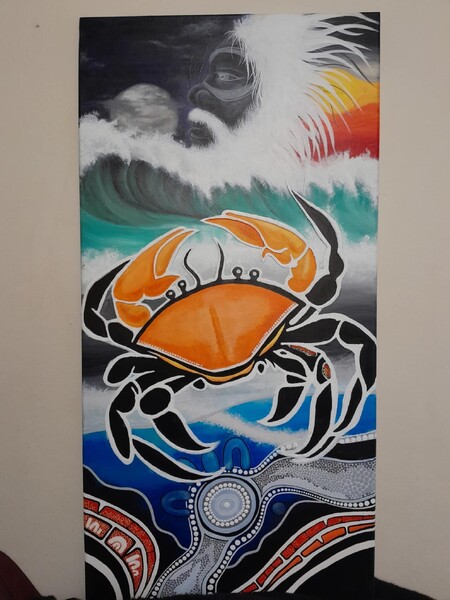
Everything posted by BrotherKris
-
Coastal & River Survival: Food & Water from Australia’s Shores
Coastal & River Survival: Food & Water from Australia’s ShoresPractical Aboriginal techniques for fishing, gathering shellfish, and finding freshwater near coastal or river areas 🌿 Why This MattersBeing near water doesn’t automatically mean survival is easy. Aboriginal people developed methods to harvest food and find drinkable water safely along coasts, rivers, and estuaries. These skills teach: Observation and understanding of tides, currents, and animal behavior Resourcefulness using simple tools and natural materials Safe handling and preparation of wild foods 🐟 1. Fishing TechniquesTools & Methods: Spears: sharpened wooden spears, sometimes hardened over fire Hand lines: natural cordage with hooks made from bone or shell Traps & weirs: small barriers in shallow streams or tidal flats Tips: Observe fish feeding times — early morning and late afternoon are ideal. Use small bait like insects, shellfish, or plant matter. Avoid overfishing — Aboriginal techniques were sustainable and low-impact. 🦪 2. Gathering ShellfishLocations: tidal rocks, estuaries, mudflats Common edible shellfish: mussels, oysters, cockles, pipis How to Collect Safely: Gather only mature specimens to ensure sustainability Avoid areas with pollution or strong currents Cook thoroughly over fire to avoid bacteria or parasites Tip: Shellfish shells can also be used as tools, scraping implements, or for decoration. 🌱 3. Edible Coastal PlantsSamphire: salty, succulent plant along shores; edible raw or cooked Sea celery & saltbush: nutritious leaves often used for flavor or salads Caution: Identify plants carefully; some coastal plants are toxic Tip: Aboriginal knowledge included which coastal plants were safe in which seasons — always observe patterns and local conditions. 💧 4. Finding Fresh Water Near SaltwaterEstuaries & tidal pools: look upstream or follow vegetation changes Boree depressions or springs: Aboriginal people knew hidden freshwater sources in coastal sands Rainwater collection: bark, leaves, or natural depressions can gather rain safely Tip: Always purify water when possible — boiling, filtering through sand, or using cloth. 💡 Practical Notes & SafetyUnderstand tides and currents; avoid areas where waves or water flow are dangerous Check for signs of predators — snakes, crocodiles (northern Australia), or aggressive birds Never eat unknown plants or shellfish; identify species carefully Practice low-impact gathering to maintain sustainability ------------------------- Article By BrotherKris "Kris Brown" For more Australian Aboriginal Information and Education CLICK HERE
-
Bush Tools & Implements: Traditional Aboriginal Survival Gear
Bush Tools & Implements: Traditional Aboriginal Survival GearDigging sticks, stone axes, wooden spears, and natural cordage 🌿 Why This MattersAboriginal people created efficient tools from natural materials to survive, hunt, and prepare food. Learning about these tools teaches resourcefulness, ingenuity, and sustainable living — skills essential in survival situations. 🪓 1. Digging Sticks (for roots and tubers)Purpose: To dig up edible roots, tubers, and water plants. Step-by-step: Select a straight branch or sapling about 1–1.2m long. Sharpen one end using a stone or fire to make it pointed. Use it to probe the soil and dig around edible roots. Optional: smooth the handle with leaves or bark to avoid splinters. Tip: Digging sticks are multi-purpose — can also stir fire pits or clear dirt for shelters. 🪨 2. Stone Axes & ChoppersPurpose: Cutting wood, carving tools, or splitting bark. Step-by-step: Find a suitable hard stone (like basalt or quartzite) with a flat side. Sharpen one edge with smaller stones or by knapping. Secure the stone to a wooden handle using natural cordage (vines, bark strips). Test carefully before heavy use. Tip: Always strike carefully — even small stone axes can cause injury if misused. 🪵 3. Wooden SpearsPurpose: Hunting small to medium game, fishing, or defense. Step-by-step: Choose a long, straight branch (about 2–3m). Sharpen one end with fire or stone. Optionally, harden the tip in fire to make it stronger. Practice throwing in a safe, open area. Tip: Spears can also be used to probe for water plants or gently move animals without killing them. 🧵 4. Natural Cordage & RopePurpose: Tying tools, making traps, or securing shelters. Step-by-step: Collect bark fibers, vines, or long grasses. Peel and twist fibers together to form strong cords. Test strength before using on heavy objects. Can be braided for extra durability. Tip: Cordage is a survival essential — it can make temporary shelters, snares, or even fishing lines. 💡 Safety & Practical NotesUse tools carefully — even small sticks or stones can injure. Always test materials before relying on them. Respect nature — take only what you need and leave the rest intact. Practice skillfully — these tools are most effective when used with patience and technique, not brute force. -------------------------- Article By BrotherKris "Kris Brown" For more Aboriginal Information & Educational resources CLICK HERE
-
Bush Tracking & Hunting Small Game
Bush Tracking & Hunting Small GameTraditional Aboriginal techniques for locating and catching small animals safely 🌿 Why This MattersFinding food in the bush requires observation, patience, and respect for nature. Aboriginal people mastered tracking, understanding animal behavior, and using simple, low-impact hunting methods. Learning these skills teaches: How to observe and interpret the environment Resourcefulness and minimal-waste survival techniques Patience and attention to subtle signs in nature 🐾 1. Tracking AnimalsAboriginal trackers used footprints, droppings, and feeding signs to locate prey. Step-by-step: Look for fresh tracks in soft soil, mud, or sand. Observe track patterns: direction, stride length, and size to identify species. Note feeding signs: chewed leaves, bark, dug-up soil, or fruit remnants. Combine clues with bird activity — birds often indicate water or animal movement nearby. Tip: Always move quietly and avoid disturbing the environment too much; you want to observe, not scare away the animals. 🪵 2. Setting Low-Impact TrapsTraditional traps were simple, safe, and sustainable: Snap Stick Trap (for small animals like possums or bandicoots): Select a flexible stick about 60–80cm long. Carve a notch near the base and secure a trigger stick. Bait with edible fruits or nuts. Place along animal trails, hidden under leaves. Tip: Check traps frequently. These methods are about survival, not cruelty, and are meant to provide food without unnecessary suffering. 🌱 3. Using Natural Camouflage & PatienceAboriginal hunters often blended with the environment using leaves, mud, and natural shadows. Sit quietly in likely animal paths or near water sources. Move slowly and minimize scent or noise. Observation skills: Note subtle changes — rustling leaves, broken branches, or distant animal calls. 🪙 4. Edible Animal ResourcesSmall mammals: possums, bandicoots, kangaroo rats Birds: pigeons, quail, parrots Reptiles & insects: lizards, yabbies, grubs (high in protein) Tip: Only consume what you can positively identify as safe. Aboriginal people had extensive knowledge of which species and parts were safe to eat. 💡 Safety & Ethical NotesAvoid harming endangered species. Never attempt hunting in areas with legal restrictions. Learn the signs of poisonous animals or dangerous insects. Focus on tracking and observation as much as actual catching — it’s an essential survival skill. ------------------------------------------------------------- Article By BrotherKris For More Australian Aboriginal Education and Information CLICK HERE
-
How to add your Signature to the bottom of your posts/topics
@Damian I see your Arrival to Hype-HQ Bro so i went ahead and created your your own Signature just incase u wanted one for your topics an posts. I had no idea what youd want to i just threw this together, I can edit it or change it, however ya want, if u dont like this one LOL PS: i hope u dont mind but i took the initiative to promote you to VIP Member status ;-) thank you for joining and showing support, its more than most others do, so VIP Status was the least i could do to show my appreciation. Thanks Bro
-
Aboriginal Fire-Stick Farming & Bush Fire Management
Aboriginal Fire-Stick Farming & Bush Fire ManagementHow traditional fire practices were used for survival, hunting, and land care 🌿 Why This MattersFire is more than just warmth or cooking — Aboriginal people used fire as a tool. This practice, called Fire-Stick Farming, allowed them to: Manage the land: prevent large, uncontrollable bushfires Encourage plant growth: new shoots attract animals for food Hunt more efficiently: controlled burns flush out game Protect settlements and food sources Understanding these techniques teaches fire discipline, resourcefulness, and ecological awareness — essential survival lessons. 🔥 1. Controlled BurnsWhat it is: Small, deliberate fires set to clear undergrowth or maintain open areas. How it works: Choose a day with mild weather and low wind. Burn small patches at a time, leaving safe firebreaks. Observe fire behavior carefully — Aboriginal people read smoke color, wind patterns, and fuel dryness. Survival Tip: Always maintain control. Controlled burns prevent larger fires and reduce risk of spreading. 🌱 2. Encouraging Food SourcesCertain plants regrow quickly after fire, providing fresh edible shoots. Fire drives animals into open spaces, making hunting more efficient. Examples include yam daisies, bush potatoes, and kangaroo grass. Tip: Observe regrowth patterns — Aboriginal people knew which plants thrived after low-intensity burns. 🪵 3. Firebreaks & SafetyAboriginal trackers cleared paths of dirt or rock to stop fire from spreading. Firebreaks protect camps, water sources, and food caches. Low, patchy burns maintain greenery while reducing fuel buildup for future fires. 💨 4. Reading Fire BehaviorAboriginal fire knowledge was meticulous: Smoke color: white smoke = moist fuel; black = dry and fast-burning. Wind patterns: helped control direction and intensity. Timing: burns were often done in cooler parts of the day for safety. Survival Application: Knowing how fire behaves allows you to use it safely for warmth, cooking, signaling, and protection. 🌄 5. Cultural & Ecological InsightsFire was used to communicate across the land, creating smoke signals. It encouraged biodiversity: new growth attracted birds, insects, and small mammals. Learning these methods teaches respect for nature, showing how humans can interact sustainably with the environment. 💡 Safety Notes for Modern PracticeNever attempt large burns without proper training or permission. Always have water and fire control tools nearby. Understand local laws — fire in the bush can be extremely dangerous and illegal outside controlled areas.
-
Aboriginal Tracking & Navigation in the Bush
Aboriginal Tracking & Navigation in the BushFinding your way and reading the land like traditional Aboriginal people 🌿 Why This MattersSurviving in the bush isn’t just about fire or food — it’s about understanding your environment. Aboriginal people developed incredibly sophisticated tracking and navigation skills over thousands of years. They could move across vast, harsh landscapes with no compass, locate water, find food, and avoid dangerous areas — all by reading subtle signs in nature. These skills teach observation, patience, and critical thinking, and can save lives if you’re ever in a survival situation. 🪵 1. Using Natural LandmarksAboriginal trackers used large, stable features in the landscape to orient themselves. Examples: Mountains & hills: By knowing the relative positions of hills, they could maintain a direction of travel. Even small rises in the land were memorized as reference points. Rivers & creeks: Following waterways was not only a navigation tool but a way to locate water and food sources. Unique trees or rocks: Certain twisted eucalyptus trees or unusual rock formations acted like “signposts” across the terrain. Tip: Combine multiple landmarks. Aboriginal people rarely relied on one feature; they created a mental map of the area using patterns and repetition. 🐾 2. Following Animal TracksAnimals are nature’s guideposts. Aboriginal trackers observed: Footprints and trails: Fresh tracks indicate not just the direction but the type of animal, its size, and even how recently it passed. Feeding signs: Chewed leaves, broken branches, or dug-up soil can tell you what animals have eaten and where. Bird behavior: Birds often fly toward waterholes in the morning or congregate around food sources. Noticing which birds are active and where they fly gives clues to resource locations. Advanced Tip: By looking at the depth and spacing of footprints, trackers could estimate the size, speed, and even the purpose of the animal (traveling or hunting). 🌱 3. Reading Vegetation & SoilAboriginal knowledge extended beyond the obvious. The plants and soil revealed hidden resources: Lush greenery: Patches of thick vegetation often indicate underground water or a spring nearby. Fruit-bearing or flowering plants: These mark fertile soils and often indicate that wildlife (food sources) will be in the area. Soil texture & color: Muddy or darker soil can indicate recent water flow, while dry sandy patches may suggest a long absence of moisture. Example: In arid regions, even a single green tree in the distance can signify a water source for both people and animals. 🧭 4. Navigating at NightMoving through the bush at night requires specialized skills: Stars: The Southern Cross points roughly to south; trackers could also use constellations to determine direction and estimate time during the night. Moon: The moon’s phases influenced travel planning; a new moon meant darker conditions but less risk of being spotted by animals, while a full moon offered better visibility. Animal cues: Nocturnal animals provide constant feedback on their environment — listening to calls or rustling can indicate water sources, predator presence, or open pathways. Tip: Night navigation is not just about avoiding getting lost; it’s about moving quietly and safely while observing nature. 💡 Practical Tracking TipsPatience is key: Aboriginal tracking is an art of observation; rushing means missing vital clues. Layer your observations: Combine landmarks, animal signs, vegetation, and sky knowledge to confirm direction. Mark your route subtly: Scratch a bark or leave a small stone marker if you need to backtrack — Aboriginal trackers sometimes used these signs when moving through unfamiliar territories. Cross-reference with survival skills: If unsure, verify your route by checking water sources, shelter locations, and fire sites. ------------------------------------------------- Article By: Kris Brown "BrotherKris" More Aboriginal Information and Education CLICK HERE
-
Aboriginal Bush Medicine & First Aid
Aboriginal Bush Medicine & First AidTraditional survival remedies from Australian native plants 🌿 Why This MattersKnowing how to use natural remedies is critical when modern medicine isn’t available. Aboriginal people relied on their knowledge of native plants to treat wounds, soothe burns, reduce pain, and fight infections. Learning these methods teaches resourcefulness, observation, and respect for the environment. 🌱 1. Tea Tree (Melaleuca alternifolia) – AntisepticUse: Leaves can be crushed to apply to minor cuts, insect bites, or skin infections. How to Prepare: Pick fresh leaves. Crush them with fingers or a stone to release oils. Apply directly to the wound. Benefit: Naturally antibacterial and healing. 🌿 2. Eucalyptus Leaves – Respiratory AidUse: Inhale steam from boiling leaves to clear nasal passages and relieve coughs. How to Prepare: Gather fresh eucalyptus leaves. Boil in water over fire. Lean over pot, cover head with cloth, and inhale steam. Benefit: Helps clear lungs and ease congestion. 🌿 3. Native Mint (Mentha australis) – Soothing TeaUse: Leaves can be brewed to make a calming, stomach-soothing tea. How to Prepare: Pluck fresh leaves. Steep in hot water for 5–10 minutes. Drink warm. Benefit: Calms digestive issues and aids hydration. 🌿 4. Paperbark (Melaleuca spp.) – Wound DressingUse: Bark can be stripped and used to cover minor cuts or burns. How to Prepare: Peel soft inner bark layers. Apply directly over wound, securing if necessary. Benefit: Protects from dirt and promotes healing. 🌿 5. Kangaroo Apple / Native Nightshade – Pain ReliefUse: Certain native fruits were traditionally used in poultices for minor aches (requires exact knowledge for safe use). How to Prepare: Only use with correct identification and guidance. Benefit: Helps relieve mild pain and inflammation. 💡 Safety NotesNever consume or apply plants without being 100% sure of their safety. Some plants are toxic if misused. When in doubt, use bark dressings, leaves, or steam inhalation — these are generally safer than ingestion. Always clean wounds as best you can before applying bush medicine. For more Australian Aboriginal Education CLICK HERE
-
How Aboriginal People Found & Collected Water in the Bush
How Aboriginal People Found & Collected Water in the BushAn essential survival skill in the Australian landscape One of the most important bush survival skills is finding safe drinking water, especially in Australia’s harsh and dry environments. Aboriginal people mastered countless techniques for sourcing water from the land, even in places that look completely dry. These methods can be lifesaving for anyone learning bushcraft or extreme survival skills. 🌿 Why Water Collection MattersIn the bush, water is life. Knowing how to locate and collect it safely can mean the difference between surviving and getting seriously dehydrated. Aboriginal knowledge of the land allowed them to read the environment, understand plants, and collect water in ways most people would never think of. 🌧️ 1. Collecting Rainwater From Bark & LeavesWhen rain falls, large pieces of bark or natural depressions in trees can act as catchments. How to do it: Find a curved piece of bark (or your Coolamon!). Position it at an angle to catch runoff from branches or tree trunks. Use another container to store the collected water. This is one of the simplest and cleanest ways to gather fresh water. 🪨 2. Rock Crevices & Hollow LogsWater often gathers in natural rock cracks or inside old hollow logs after rain. How to collect: Use a cloth or bandana to soak up water from narrow spaces. Squeeze it into a container. If shallow enough, use a small cup or Coolamon to scoop it out. 🌱 3. Following Animal Tracks to Water SourcesAnimals often know where water is, even when it’s hidden. Signs to look for: Fresh footprints leading toward thicker vegetation Bird activity (especially early morning) Trails heading downhill or toward gullies Scarring on trees from animals climbing near water sources This method requires patience and awareness — but it's highly reliable. 🌵 4. Tapping Water From Roots (Tree Root Water Method)This is one of the most iconic Aboriginal techniques. How it’s done: Identify the right tree — typically eucalyptus or bloodwood. Find a soft root just under the surface. Dig a short section out and cut a piece roughly arm-length. Stand it upright and let the water drip out into a container. This provides surprisingly clean, drinkable water. 💧 5. Soakages (Underground Water Wells)In desert areas, “soakages” were vital. Basic method: Look for soft, damp sand in creek beds or dry river channels. Dig downward until the sand becomes wet. Allow the hole to slowly fill with filtered water. Scoop the water out or soak it with cloth. Aboriginal people often protected these sites by covering them with branches to prevent animals from contaminating them. ☀️ 6. Morning Dew CollectionDew is a surprisingly reliable water source. How to collect: Use cloth, leaves, or clothing to wipe dew from grass and plants. Wring it into a container. Best done at sunrise before the sun evaporates it. 🔥 Safety Tip: If In Doubt, Purify ItEven clean-looking water can contain bacteria. Boiling it for a few minutes is the safest option. If you can’t boil it — use the sand/charcoal/cloth filter method we can write a tutorial for later. Article by Kris Brown "BrotherKris" For more aboriginal Education CLICK HERE
-
How to Make a Traditional Aboriginal Coolamon
How to Make a Traditional Aboriginal Coolamon Why This Matters The coolamon is a traditional Aboriginal wooden vessel used for carrying food, water, seeds, or even babies. It’s lightweight, durable, and beautifully crafted. Learning how to make one teaches precision, patience, and respect for natural resources, and gives insight into traditional bushcraft and daily life. Materials Needed A suitable piece of wood (softwood like wattle or mallee works best) Simple carving tools (stone, knife, or modern equivalent) Sanding material (stone or rough leaves) Optional: natural fibers or bark for binding or decoration Step-by-Step Instructions Select the Wood Find a piece of soft, workable wood roughly the size you want your vessel. Traditionally, Aboriginal people selected branches or slabs with natural curvature. Shape the Vessel Carve the outside into a shallow, elongated bowl shape. Hollow out the inside carefully, keeping the walls even. Smooth the Surface Use stones, rough leaves, or sand to smooth the inside and outside. This prevents splinters and improves durability. Optional Decoration / Handles Carve simple designs or attach natural fiber handles if needed. Keep the vessel functional first; decoration comes second. Use & Care Can be used to carry water (lined with leaves), food, or other supplies. Avoid leaving it in direct sunlight or rain for long periods to prevent cracking. Survival Tips Coolamons are versatile — can also be used to collect firewood, forage food, or store edible plants. If you don’t have carving tools, you can adapt smaller natural bark vessels as a temporary solution. Why This Hack Matters The coolamon is more than just a container — it’s a lesson in resourcefulness, craftsmanship, and sustainability. Aboriginal people created functional tools with minimal impact on their environment, teaching us to make the most of what nature provides. For More Aboriginal Education CLICK HERE
-
How Aboriginal People Used Bush Foods for Survival
How Aboriginal People Used Bush Foods for SurvivalWhy This Matters Knowing which plants, seeds, fruits, and roots are edible is a critical survival skill. Aboriginal people have a deep understanding of the Australian bush and used native flora for food, medicine, and hydration. Learning these skills teaches observation, patience, and respect for the environment — essential traits when surviving with minimal resources. Materials Needed / Useful Items A field guide or prior knowledge of local plants (optional but helpful) Small knife or digging stick Containers (like a coolamon or jar) for collecting Water for washing, if available Step-by-Step Instructions Identify Edible Plants Look for native bush tucker: bush tomatoes, wattleseed, quandong, yams, bush berries, or roots. Always check local guides or expert advice — some plants can be toxic. Harvest Carefully Use a knife, digging stick, or hands to collect roots, fruits, or seeds without destroying the plant entirely. Take only what you need to ensure sustainability. Prepare the Food Wash fruits or seeds if water is available. Some roots may need roasting, soaking, or boiling before eating. Seeds like wattleseed can be ground into flour for baking or thickening soups. Storage Keep collected food in a dry container or wrap in leaves to transport. Consume perishable items first; seeds and dried roots last longer. Observe & Respect Watch how native animals interact with plants — they often know what’s safe to eat. Avoid over-harvesting and damaging habitats. Survival Tips Learn a few staple edible plants native to your area — this knowledge is invaluable in emergencies. Even small fruits or seeds can give energy and nutrients when nothing else is available. Combine bush foods with safe water collection and fire-starting for a full survival setup. Safety Notes Only eat plants you are 100% sure are safe. Some bush plants can be poisonous. Always boil or roast roots if unsure — many are safe after cooking but toxic raw. If possible, learn from Aboriginal knowledge holders or reliable guides to avoid mistakes. Why This Hack Matters Aboriginal bush foods are a lesson in observation, patience, and using natural resources sustainably. They remind us that survival is about more than tools — it’s about learning from the environment, understanding nature, and respecting the land. Traditional Australian Bushfoods for Survival 1. Bush Tomato (Solanum centrale) Identification: Small, round, yellow to orange when ripe; grows on low spiky bushes. Where to Find: Arid inland areas, sandy soil. Preparation: Eat ripe fruit raw or dry for later use; avoid unripe green fruit (toxic). Survival Benefit: Rich in Vitamin C, energy source. 2. Wattleseed (Acacia species) Identification: Small hard seeds in brown pods; mature pods dry and brittle. Where to Find: Wattle trees along riverbeds and plains in various regions. Preparation: Roast and grind into flour for baking or thickening soups. Survival Benefit: High in carbohydrates, energy-dense. 3. Quandong (Santalum acuminatum) Identification: Bright red fruits, 2–4 cm, grow on small shrubs. Where to Find: Arid and semi-arid regions, sandy or rocky soils. Preparation: Eat raw, cook, or dry; remove seeds. Survival Benefit: High Vitamin C, helps hydration. 4. Bush Yam (Dioscorea species) Identification: Thick tuberous roots underground, heart-shaped leaves above. Where to Find: Moist areas near rivers or forested zones. Preparation: Must cook thoroughly (boil or roast); raw can be toxic. Survival Benefit: High in carbohydrates, energy-rich. 5. Native Spinach / Warrigal Greens (Tetragonia tetragonioides) Identification: Succulent triangular leaves; grows in coastal sandy areas. Where to Find: Coastal, salt-tolerant areas. Preparation: Boil or steam to reduce oxalates. Survival Benefit: Rich in vitamins and minerals. 6. Finger Lime (Citrus australasica) Identification: Small elongated citrus fruits; pulp inside looks like caviar. Where to Find: Rainforest gullies and scrubby coastal areas in Queensland and NSW. Preparation: Eat raw, add to water or food. Survival Benefit: Vitamin C, tangy taste helps with hydration. 7. Kakadu Plum (Terminalia ferdinandiana) Identification: Small green fruits, turns yellow when ripe. Where to Find: Northern Australian regions, tropical woodlands. Preparation: Eat raw or dry; very sour. Survival Benefit: Extremely high in Vitamin C, antioxidant-rich. 8. Bush Banana / Yam Daisy (Microseris lanceolata) Identification: Small yellow flowers above ground, tuberous roots below. Where to Find: Grasslands and alpine regions. Preparation: Cook roots before eating. Survival Benefit: Good carbohydrate source, energy for long treks. 9. Macadamia Nut (Macadamia integrifolia) Identification: Hard round nuts inside green husks; grows on trees. Where to Find: Subtropical eastern Australia, rainforests. Preparation: Crack shells and roast before eating. Survival Benefit: High-fat content, energy-dense snack. 10. Bush Raspberry / Muntries (Kunzea pomifera) Identification: Small red berries, low-growing shrubs. Where to Find: Southern coastal regions of Australia. Preparation: Eat raw or cook into sauces. Survival Benefit: Vitamin C and antioxidants, boosts energy. 11. Bush Cucumber (Cucumis spp.) Identification: Small green fruits, climbing vine. Where to Find: Northern and eastern Australia, open woodlands. Preparation: Eat ripe fruit raw; avoid immature ones. Survival Benefit: Hydrating, low-calorie source of nutrients. 12. Lilly Pilly (Syzygium spp.) Identification: Small round berries, red or purple, with glossy leaves. Where to Find: Rainforest and wet sclerophyll forests. Preparation: Eat raw or cook into jams. Survival Benefit: High in antioxidants, vitamins. Read more about aboriginal peoples How aboriginal people created fire How to build a traditional Bush Shelter How Australian Aboriginal Peoples found and used bushfoods or survival
-
How to Build a Traditional Aboriginal Bush Shelter (Gunyah)
How to Build a Traditional Aboriginal Bush Shelter (Gunyah) Why This Matters Having a safe, dry, and insulated place to rest is critical in survival situations. Aboriginal people developed shelters called gunyahs, made entirely from natural materials around them — bark, sticks, leaves, and grasses. Learning these techniques teaches resourcefulness, patience, and adaptability, skills just as useful today in survival or extreme outdoor situations. Materials Needed Flexible branches or saplings (for a frame) Large sheets of bark, palm fronds, or long grass (for roofing and walls) Twine, vines, or strips of bark (for tying or securing materials) Optional: stones or heavy logs to anchor edges Step-by-Step Instructions Choose a Safe Spot Look for a flat, dry area away from water flow or rockslides. Clear the ground of sharp sticks, stones, or debris. Build the Frame Use strong, flexible branches to form an A-frame or lean-to. Secure the branches together at the top with vines or strips of bark. Anchor the frame ends with stones or by pushing them into the ground. Add Walls and Roof Layer bark, palm fronds, or long grasses over the frame. Start from the bottom and overlap layers like shingles to shed rain. Ensure enough coverage for protection but leave a small opening for ventilation. Insulate the Floor Add extra leaves, bark, or grasses on the floor for comfort and warmth. Finishing Touches Check for gaps or holes and patch with extra materials. Make a small windbreak with extra bark or stones if needed. Survival Tips Choose materials that are dry and strong — wet or brittle materials can collapse. Orientation: face the opening away from prevailing winds for extra warmth. Keep the interior small — smaller spaces retain heat better. You can use multiple gunyahs together for storage, cooking, or communal space. Safety Notes Avoid building under unstable trees or near cliffs. Make sure materials are securely anchored to avoid collapse. Keep your fire (if used) a safe distance from the shelter to avoid accidents. Why This Hack Matters A gunyah isn’t just a shelter — it’s a lesson in adaptation and using what nature provides. Aboriginal bush shelters were effective, sustainable, and clever, giving people safety, warmth, and comfort in the harsh Australian bush. Learning to make one today builds practical survival skills while connecting with traditional knowledge. Read more about aboriginal peoples How aboriginal people created fire How to build a traditional Bush Shelter How Australian Aboriginal Peoples found and used bushfoods or survival
-
How Aboriginal People Traditionally Started Fires
How Aboriginal People Traditionally Started Fires Why This Matters Fire was central to Aboriginal life: for cooking, warmth, protection, signalling, and even managing the land. Learning how Aboriginal people traditionally made fire gives us insight into human ingenuity, patience, and resourcefulness. These techniques were developed over thousands of years, using only natural materials and understanding of the environment — no lighters, matches, or modern tools required. Knowing these methods can also be practical in survival situations, teaching patience, dexterity, and a deep respect for nature. You don’t just get fire — you learn skills that make other survival tasks easier, like boiling water, cooking food, keeping animals away, or creating smoke signals. Materials Needed Dry wood or sticks (softwood like wattles or gum works best) Fire stick or spindle (a straight stick for spinning) Fireboard (flat piece of wood with a small depression for the spindle) Tinder (dry grass, bark fibres, or other highly flammable natural material) Optional: small stones or leaves to help stabilize fire area Step-by-Step Instructions (Friction Method / Fire Drill Concept) Prepare the Fireboard Choose a flat piece of dry, softwood. Carve a small notch on the edge and a shallow depression where the spindle will spin. Prepare the Spindle Select a straight stick that fits comfortably in your hands. The end that spins should be slightly rounded. Gather and Prepare Tinder Collect dry grasses, shredded bark, or fibrous plant material. Form it into a small, loose bundle ready to catch a spark. Position Yourself & Spin the Spindle Place the spindle in the depression on the fireboard. Roll it rapidly between your palms while pressing down firmly. Maintain steady speed and pressure — patience is key. Catch the Ember After friction builds heat, a small glowing ember will form in the notch. Carefully transfer the ember to your tinder bundle using a leaf or small piece of bark. Ignite the Fire Gently blow on the ember until the tinder catches flame. Gradually add small twigs to build your fire. Additional Survival Tips Always carry some dry tinder or char cloth in a small container — it can make starting a fire much faster. Practice with small sticks first before attempting larger fires. Observe the environment — some areas have naturally more flammable materials or safer fire spots. Remember: controlled, small fires are safer and more efficient than large, uncontrolled fires. Safety Notes Only practice outdoors in a safe, open space. Keep water or dirt nearby in case the fire spreads. Avoid practicing near dry shrubs, flammable materials, or inside tents. Don’t rush — this method is about precision and patience. Why This Hack Matters Traditional fire-making teaches patience, skill, and respect for natural resources. It’s not just about producing flame — it’s about learning to survive and thrive with minimal tools. Aboriginal fire-making methods remind us that survival is as much about knowledge, observation, and creativity as it is about equipment. BrotherKris Read more about aboriginal peoples How aboriginal people created fire How to build a traditional Bush Shelter How Australian Aboriginal Peoples found and used bushfoods or survival
-
Survival & Extreme Budget Tips: DIY Hacks to Make Life Easier
Survival & Extreme Budget Tips: DIY Hacks to Make Life Easier Life on the streets or living on a tight budget can be tough, but a little creativity and resourcefulness can go a long way. These simple, practical tips show you how to repurpose everyday items, stay safe, and make life more manageable — from keeping warm at night to making fire-starting easier, and even organizing essentials. Each hack is designed to be easy to follow and use, helping you get the most out of what you have. 1. DIY Insulated Sleeping Pad from Cardboard Why You Need It: Staying warm at night is critical when you’re sleeping on hard or cold ground. Cardboard is lightweight, free, and surprisingly effective. Materials Needed: Large sheets of cardboard Blanket or tarp (optional) Step-by-Step Instructions: Flatten the cardboard sheets and layer 2–3 pieces thick. Place under your sleeping bag or blanket to insulate from the cold ground. Add extra blankets or tarp on top if it’s damp or windy. Swap out wet cardboard for dry layers if it rains. Survival Tip: Cardboard also helps keep moisture from seeping into your sleeping bag and can double as a sitting mat during the day. 2. Portable Water Filter (DIY)Why You Need It: Clean water is essential. This isn’t perfect for long-term use but helps filter out debris and larger particles. Materials Needed: Plastic bottle Cloth or coffee filter Sand, small stones, activated charcoal (optional) Step-by-Step Instructions: Cut the bottom off a plastic bottle. Layer cloth or coffee filter over the mouth of the bottle. Add layers: stones → sand → charcoal → cloth. Pour water through the top — the liquid that comes out is clearer. Safety Tip: This only filters physical debris. Always boil water or use purification tablets if possible before drinking. 3. Small DIY Stove from a Tin Can (Hobo Stove)Why You Need It: Cook meals safely without a full stove. Materials Needed: Large empty tin can Smaller can that fits inside Sand or dirt Small firewood or charcoal Step-by-Step Instructions: Place small can inside larger can with sand/dirt around it for insulation. Fill inner can with small pieces of wood or charcoal. Light carefully, preferably in a safe, open area. Place a small pot on top to cook food or boil water. Safety Tip: Always keep water nearby and cook in ventilated space. 4. DIY Candle Holder from a JarWhy You Need It: Glass jars make stable candle holders that prevent knocking over a flame. Materials Needed: Empty glass jar Candle Sand or small stones Step-by-Step Instructions: Clean jar thoroughly. Pour a small layer of sand or stones in the bottom. Place the candle upright in the jar. Light carefully and keep away from flammable materials. Safety Tip: Never leave candles unattended. Keep water nearby. 5. Repurposed Storage ContainersWhy You Need It: Organize small items, store food, or keep essentials dry. Materials Needed: Empty jars, cans, or small containers Labels (optional) Step-by-Step Instructions: Wash containers thoroughly. Store small items like first-aid supplies, matches, or dry food. Seal lids tightly to keep moisture and dirt out. Survival Tip: Containers can also be used to carry water, make DIY candle holders, or even create small plant pots. 6. DIY Hand Wash StationWhy You Need It: Hygiene is crucial when you have limited water access. Materials Needed: Plastic bottle with cap Nail or pin Soap Step-by-Step Instructions: Punch 3–5 small holes in the bottle cap. Fill the bottle with water. Screw cap on. Squeeze gently to rinse hands; add soap for proper cleaning. Survival Tip: This can also wash small dishes or food items when on the move.
-
How to Make a Safe Candle Holder from a Tin Can (Homeless & Survival Tips)
How to Make a Safe Candle Holder from a Tin Can (Homeless & Survival Tips) What This Is & Why You Need It When you’re living rough, creating light at night is essential — but open flames can be dangerous, especially inside a tent or makeshift shelter. By repurposing an empty tin (like a baked beans can), you can make a stable, lightweight candle holder that helps prevent accidents and keeps your candle strong and safe. What You’ll Get Out of It Stability: The weight of the tin keeps the candle upright and reduces the risk of tipping over Safety: The metal walls help contain the flame if things go wrong Reuse: It’s made from trash — old cans — so it’s cheap and eco‑friendly Materials Needed Empty metal tin (baked beans, soup, etc.) Sand, gravel, or small stones A candle (tea light or small wax candle) Optional: a nail or a screwdriver Step-by-Step Instructions Prepare the Can Clean the tin thoroughly, removing any food residue. Remove the label if possible — this prevents fire risk and makes it easier to see whether the flame is close to the edges. Stabilise the Base Pour a layer (about 1–2 cm) of sand, gravel, or small stones into the bottom of the can. This weight helps keep the tin steady and prevents it from tipping easily. Insert the Candle Place the candle in the centre of the can, gently pushing it into the sand or stones so it stands upright. If it’s a tea‑light, it should sit nicely; if it’s a taller candle, you might need to slightly bury its base in the sand. Optional Ventilation If you’re worried about heat or smoke build-up, carefully punch a few small holes (2–3 mm) near the top of the tin using a nail or screwdriver. Make sure the holes are high enough so they don’t cause the sand to spill out or let the candle fall over. Light & Use Light the candle carefully. Make sure it’s on a stable surface. Avoid placing it directly on plastic or anything flammable. Keep water or sand nearby just in case — better safe than sorry. After Use Let the candle burn down or blow it out safely. When the candle is gone or nearly gone, remove any leftover wax. You can refill the tin with a new candle, or reuse the setup for other things (like holding small items). Safety Notes Don’t leave the candle unattended — always be around when there’s a flame. Use outlets or surfaces that are stable. Avoid placing the tin on uneven ground. Keep flammable materials (blankets, clothing) away from the can while the candle is burning. Extinguish properly — either with water, by smothering, or by letting it burn down to the base safely. Why This Hack Matters In a situation where you don’t have proper lamps or electricity, making your own candle holder is about resourcefulness. It’s about staying safe, being smart with what you do have, and making something stable and useful out of something most people just throw away.
-
How to Make Char Cloth — A Basic Survival Fire Starter (Homeless & Survival Tips)
How to Make Char Cloth — A Basic Survival Fire Starter (Homeless Survival Tips) What This Is & Why You Need It Char cloth is a small piece of fabric that’s been burned in a low-oxygen environment to make it extremely easy to catch a spark. In survival situations, it’s a lightweight, reliable way to start a fire even with limited resources. Knowing how to make and use char cloth can save time, effort, and sometimes even your safety in the wild. Benefits of Char Cloth Catches a spark almost instantly, making fire-starting easier. Works with a flint, steel, or even a lighter in tricky conditions. Lightweight and easy to carry — perfect for survival kits. Materials Needed Small scrap of 100% cotton fabric (old T-shirt, pillowcase, etc.) Tin container with a tight-fitting lid (like a small mint or altoids tin) Nail, screwdriver, or small drill to make a hole in the lid Fire source for heating the tin (campfire, stove, etc.) Tweezers or pliers Step-by-Step Instructions Prepare the Fabric Cut the fabric into small pieces, about 2–3 cm squares. Cotton works best — synthetic fabrics won’t char properly and can produce toxic fumes. Prepare the Tin Using a nail, screwdriver, or drill, make a small hole in the lid. This allows smoke to escape. Place your fabric pieces inside the tin and secure the lid. Heat the Tin Put the tin near or on your fire, stove, or hot coals. Heat slowly — the goal is to cook the fabric without oxygen, not burn it outright. You’ll see smoke coming out of the hole. Once the smoke stops, your char cloth is ready. Cool & Remove Use pliers or tweezers to remove the tin from the heat (it will be very hot!). Let it cool completely before opening. Carefully remove the charred fabric — it should look black and fragile, like ash but still hold together. How to Use Char Cloth Place a small piece on a fire-starting tinder bundle. Strike a spark from flint & steel or ferro rod directly onto the char cloth. Once it glows, transfer it carefully to your tinder to start your fire. Safety Tips Work in a ventilated area — smoke can be intense. Keep water or dirt nearby in case of accidental fire. Use tweezers or pliers to handle hot tin — never touch with bare hands. Don’t rush — a slow, controlled heating process gives the best char cloth. Bonus Survival Tips Always carry a few pieces of char cloth in a small, sealed container for emergencies. Combine char cloth with dry grass, leaves, or wood shavings to make fire-starting much easier. Even a small spark on char cloth can ignite a fire, making it perfect for survival kits where traditional matches or lighters might fail. Why This Hack Matters Char cloth is about preparation, resourcefulness, and efficiency. By creating a reliable fire starter ahead of time, you can save energy, stay warm, cook food, and signal for help — all critical skills in survival situations.
-
🌧️ Help & Assistance Directory for People Experiencing Homelessness, Hardship, or Crisis (Sydney • Western Sydney • Australia-Wide)
🛠️ Comprehensive Help & Assistance Directory — Sydney / Western Sydney + NSW + Australia-WideService / Organisation What They Do / Help With Contact Details Link2Home (NSW) Statewide homelessness referral, info, assessments, crisis accommodation Phone: 1800 152 152 (24/7) NSW Government Haymarket Foundation / The Haymarket Centre Crisis accommodation, case management, living-skills, drug + alcohol support Freecall: 1300 029 202 Phone: (02) 9197 9700 Address: 137-139 Regent St, Chippendale NSW 2008 Email: centre@haymarket.org.au sydneyhomelessconnect.com+1 Sydney Homeless Early Intervention Service (SHEIS) Short-term tenancy support, help keep your home, prevent homelessness Phone: Freecall 1300 029 202 / (02) 9197 9700 Email: sheis@haymarket.org.au Address: 137-139 Regent St, Chippendale NSW 2008 Hours: Mon–Fri, 8am–4pm The Haymarket Foundation Jewish House 24/7 crisis line, homeless accommodation, counselling, addiction & domestic violence support Crisis line: 1300 544 357 (24/7) Services phone: 02 9386 0770 Email: reception@jewishhouse.org.au Address: 17 Flood St, Bondi NSW 2026 Jewish House+1 St Vincent de Paul (Vinnies) NSW Homelessness outreach, crisis accommodation, support to maintain tenancies Phone: 13 18 12 (option 5 for housing) Email: vinnies@vinnies.org.au Vinnies NSW Mental Health Line 24/7 mental health advice, assessment, referral to services Phone: 1800 011 511 NSW Health Lifeline 24/7 crisis support, emotional assistance, suicide prevention Phone: 13 11 14 Department of Health+1 Suicide Call Back Service Free, 24/7 phone and online counselling for people affected by suicide Phone: 1300 659 467 National Mental Health Commission+1 Beyond Blue Support for depression, anxiety, mental health struggles Phone: 1300 224 636 NSW Health+1 13YARN Crisis support line for Aboriginal & Torres Strait Islander people Phone: 13 92 76 Mental Health Australia Kids Helpline Counselling for young people (5–25), emotional support, crisis chat Phone: 1800 551 800 NSW Health+1 Alcohol & Drug Information Service (ADIS) 24/7 support, counselling, information & referrals for alcohol / drug use Phone (National): 1800 250 015 National Mental Health Commission 1800RESPECT Support for people impacted by domestic, family, or sexual violence Phone: 1800 737 732 National Mental Health Commission Headspace (Youth) Early-intervention mental health support for 12–25 year olds Phone: 1800 650 590 National Mental Health Commission National Debt Helpline / Financial Counselling Free, confidential financial counselling for people in crisis Phone: 1800 007 007 National Mental Health Commission Australian Red Cross (Housing Support) Helps refer people to housing, temporary accommodation, case support 🧠 Mental Health & Crisis Support ServicesThese are more focused on emotional, mental health, or crisis support — very important when someone homeless is struggling with depression, stress, or feeling lost: Lifeline — 24/7 crisis support, suicide prevention: 13 11 14 Wikipedia+1 Suicide Call Back Service — Phone & online counselling: 1300 659 467 National Mental Health Commission Beyond Blue — Anxiety, depression, general mental health: 1300 224 636 National Debt Helpline+1 Kids Helpline — For young people (5-25), free phone/online counselling: 1800 551 800 Wikipedia 13YARN — Crisis support for Aboriginal & Torres Strait Islander people: 13 92 76 National Debt Helpline ReachOut Australia — Online peer support, forums, mental health resources: ReachOut.com Wikipedia When life gets rough, finding help shouldn’t feel impossible. This directory brings together real services, real contacts, and real support available across Sydney, Western Sydney, and the rest of Australia. If you or someone you know is struggling — you’re not alone, and you’re not forgotten. 🏙️ SYDNEY & WESTERN SYDNEY – LOCAL SUPPORT🔷 Rapid Response (Haymarket Foundation)What they do: Crisis accommodation Outreach case management Help with essentials (food, toiletries, etc.) Support navigating housing & welfare Mental health + alcohol/drug support Contact: 📞 1300 029 202 📍 137-139 Regent St, Chippendale NSW ✉️ rapid@haymarket.org.au 🔷 Sydney Homeless Early Intervention Service (SHEIS)Helps prevent homelessness by supporting people to keep their tenancy, reduce rental arrears, and access ongoing support. 📍 Same location as Haymarket Foundation 🕐 Hours: 8am–4pm, Mon–Fri 🔷 Orange Sky – Mobile Laundry & ShowersFree washing, drying, showers + friendly volunteers to talk to. Where: Operates throughout Sydney & Western Sydney (Use their website to find times + van locations) 🔷 Western Sydney Community Housing ProvidersThese services help with housing applications, case workers, long-term support: Wentworth Community Housing Link Wentworth Housing Evolve Housing Mission Australia Housing Wesley Mission Housing (If you want, I can add full contacts for each.) 🔷 Local Councils (Western Sydney)Most councils have homelessness officers or community support teams: Blacktown City Council Penrith City Council Parramatta City Council Liverpool City Council Campbelltown City Council Cumberland City Council They can give referrals, food support, emergency motel options, and crisis pathways. Just ask me and I can compile exact numbers for each. 🏡 NSW STATEWIDE HOMELESSNESS SERVICES🔷 Link2Home (NSW’s Main Homelessness Line — IMPORTANT)For: crisis accommodation, shelters, referrals, safety assessments 📞 1800 152 152 (24/7) If someone is suddenly unsafe or without anywhere to sleep — call this. 🔷 Specialist Homelessness Services (SHS)Network of government-funded homelessness support across NSW. They help with: Crisis accommodation Domestic violence support Tenancy problems Case workers Long-term housing pathways Use the NSW Government portal to find one in your local area. 🔷 Legal Aid NSW – Homelessness ServiceHelps with: Tenancy rights Rental arrears Eviction Fines Centrelink issues Domestic violence & safety matters Website: Legal Aid NSW → Housing and Homelessness section 🇦🇺 AUSTRALIA-WIDE SERVICES🔷 Ask Izzy (Very Useful)A huge searchable directory for: food housing bathrooms showers/laundry mental health domestic violence financial help legal help Just type your postcode and it shows everything nearby. 🔷 Centrelink Crisis / Hardship PaymentsAvailable Australia-wide for people experiencing: Homelessness Extreme financial crisis Domestic violence Mental health hardship Sudden loss of income Payments include: Crisis Payment Special Benefit Advance Payment Rent Assistance 🔷 Salvation Army (Aus-Wide)Offers: shelters, food hampers, financial counselling, case workers, emergency relief, addiction services. Search “Salvos Near Me” to find local support. 🔷 St Vincent de Paul (Vinnies)Provides: homeless services, food vouchers, accommodation, vouchers, emergency aid. 🔷 Mission AustraliaCase management, housing programs, mental health support, youth programs, substance use services. 🔷 Orange Sky (Aus-wide)Free laundry + showers in most major cities. 🧠 MENTAL HEALTH & CRISIS SUPPORT (AUSTRALIA-WIDE)🔷 Lifeline (24/7)Someone to talk to, crisis counselling, emotional support. 📞 13 11 14 🔷 Suicide Call Back Service (24/7)Phone and online counselling. 📞 1300 659 467 🔷 Beyond BlueHelp for depression, anxiety, mental health struggles. 📞 1300 224 636 🔷 NSW Mental Health Line (if in NSW)24/7 mental health triage & referrals. 📞 1800 011 511 🔷 Alcohol & Drug Information Service (ADIS)Support for addiction and substance struggles. 📞 1800 250 015 🔷 Kids Helpline (Ages 5–25)📞 1800 551 800 🔷 13YARNFirst Nations crisis support 📞 13 92 76 ❤️ Final Note: You Deserve HelpIf you’re reading this because you’re struggling, hurting, or lost — you’re not weak. You’re human. You deserve support, safety, shelter, and dignity. Reach out. Talk to someone. Call one of these numbers. Small steps lead to big change — and you don’t have to walk it alone. 🔎 How to Find More Local Help Homelessness Australia — They maintain a directory of homelessness services by state/territory. Good first stop to locate services near you. Homelessness Australia Ask Izzy — A super useful website/app where you can search for local services: shelter, food, health care, counselling, etc. NSW Government+1
-
🌧️ The Hidden Hardships of Homelessness in Australia — And Why Support Matters More Than Ever (includes Helpful Assistance links for those in need)
🌧️ The Hidden Hardships of Homelessness in Australia — And Why Support Matters More Than Ever (includes Helpful Assistance links for those in need) Homelessness isn’t always what people imagine. It’s not just tents in parks or people sleeping on city streets. In Australia, homelessness often looks like couch-surfing, living out of a car, staying in temporary motels, or constantly moving because there’s nowhere stable to go. What people don’t see is the emotional toll it takes. The constant stress. The fear of not knowing where you’ll sleep next. The shame that shouldn’t exist — but does. The exhaustion of fighting every day just to stay afloat. Homelessness doesn’t just take away a roof. It wears down your mental health, your confidence, your sense of safety, and even your identity. And this is why support matters so much. Family and friends can be the difference between someone slipping through the cracks or finding their way back. A small act — a place to shower, a meal, a couch, a check-in message — can restore a sense of dignity and hope. You never know how deeply one moment of kindness might reach. Many people going through homelessness aren’t lazy, broken, or “too far gone.” They’re human beings dealing with trauma, bad luck, rising costs, mental health battles, abuse, or just life hitting harder than they could handle alone. If you’ve never been in that situation, be grateful — not judgemental. And if you have been there, or are there now, know this: you’re not alone, and you’re not “less.” You’re navigating some of the hardest conditions a person can face. Let’s build a culture where people lift each other instead of turning away. A little support can change someone’s entire direction. Empathy costs nothing — but it can mean everything. ------------------------------------ 🇦🇺 Helpful Services & Organisations for People in Need (Homelessness + Crisis Support)Here are some trusted organisations and hotlines in Australia, plus what they do: Service / Organisation What They Help With Contact Details / Info Link2Home Homelessness information, referrals, assessments, crisis accommodation 1800 152 152 (NSW) NSW Government+1 24/7 for info; from 9am-10pm for referrals. NSW Government Homelessness Hotline (Victoria) Emergency accommodation & housing help 1800 825 955 housing.vic.gov.au After hours: call and they refer to Salvation Army crisis. housing.vic.gov.au Queensland Homelessness / Health Outreach Outreach health + counselling for homeless, addiction-related help Queensland Homelessness Service Centre, plus: Drug Arm Street Outreach Service, Homeless Health Outreach Team. Queensland Government Homeless Connect SA Advice, referrals, and local homelessness services (SA) 1800 003 308 (24/7) DHS Orange Sky Free laundry and shower services, plus social connection Operates across Australia. Wikipedia Toora Women Support for women and children facing homelessness (ACT) Provides emergency & long-term accommodation, case support, substance abuse help. Wikipedia Jewish House Crisis accommodation + psychosocial support Based in Sydney; 14-night crisis centre with support services. Wikipedia 🧠 Mental Health & Crisis Support ServicesThese are more focused on emotional, mental health, or crisis support — very important when someone homeless is struggling with depression, stress, or feeling lost: Lifeline — 24/7 crisis support, suicide prevention: 13 11 14 Wikipedia+1 Suicide Call Back Service — Phone & online counselling: 1300 659 467 National Mental Health Commission Beyond Blue — Anxiety, depression, general mental health: 1300 224 636 National Debt Helpline+1 Kids Helpline — For young people (5-25), free phone/online counselling: 1800 551 800 Wikipedia 13YARN — Crisis support for Aboriginal & Torres Strait Islander people: 13 92 76 National Debt Helpline ReachOut Australia — Online peer support, forums, mental health resources: ReachOut.com Wikipedia 🔎 How to Find More Local HelpHomelessness Australia — They maintain a directory of homelessness services by state/territory. Good first stop to locate services near you. Homelessness Australia Ask Izzy — A super useful website/app where you can search for local services: shelter, food, health care, counselling, etc. NSW Government+1
-
Warrabi and Old Man Jack the Swagman - Aboriginal Dreaming Story By BrotherKris
Warrabi and Old Man Jack the Swagman Aboriginal Dreaming Story By BrotherKris Aboriginal Elder Warrabi and Old Man Jack the Swagman By Kris Brown 2024 Gather 'round, friends, and listen close to the tale of Aboriginal Elder Warrabi and Old Man Jack the Swagman. A story of unlikely friendship, adventure, and the power of storytelling. In the sun-scorched Australian outback, Warrabi, a wise and respected elder of the Indigenous tribe, sat beneath the ancient eucalyptus tree, watching the stars twinkle to life. His eyes, weathered by the harsh desert winds, sparkled with a deep understanding of the land and its secrets. The tribe's children would often gather around him, mesmerized by his tales of ancestors and the Dreamtime. One evening, as the moon was rising high in the sky, a rustling in the scrub announced the arrival of Old Man Jack, a swagman who had wandered into town from afar. His dusty boots and tattered hat told tales of countless journeys along the dusty tracks and rivers of Australia. Jack had heard whispers of Warrabi's wisdom and sought him out, hoping to learn from the elder's vast knowledge. As they sat together under the starry sky, Warrabi noticed Jack's weathered face, etched with lines of experience and hardship. The old man's eyes seemed to hold a deep sadness, as if carrying the weight of countless stories untold. Warrabi nodded knowingly, sensing that this stranger carried a tale or two worth sharing. "Tell me, Old Man Jack," Warrabi said, his voice low and soothing, "what brings you to our land?" Jack's eyes clouded over, and he began to speak in a gravelly voice, his words dripping with the weight of years. "I've been traveling for so long," he said, "searching for something I once knew but lost. A place where memories fade like sandstorms on the wind." Warrabi listened intently, his eyes locking onto Jack's. As Jack spoke, the elder's gaze seemed to weave a web of connection between them, drawing forth stories long buried beneath the surface. "You see," Jack continued, "I was once a bushman, living off the land as it should be lived. But life took its toll: loved ones passed on, friends drifted away, and I found myself alone with only my memories to keep me company." As Jack spoke, Warrabi nodded knowingly. He sensed that this old man was not just sharing his story; he was searching for a way to reclaim his sense of purpose. The Aboriginal elder leaned forward, his eyes aglow with wisdom. "Old Man Jack," he said gently, "you have come to the right place. The Dreamtime runs deep in these lands. I will teach you how to listen to its whispers." And so began their journey together – a tale of unlikely friendship forged in the heart of the outback. Warrabi shared his knowledge of the land and its secrets with Old Man Jack, teaching him how to listen to the whispers of the Dreamtime. As they walked through the desert landscapes, Jack's eyes sparkled with renewed wonder and curiosity. As they sat beneath the stars once more, Jack began to share his own stories – tales of adventure on dusty tracks and rivers; stories of people who had left an indelible mark on his soul; stories that had been waiting years to be told. Warrabi listened attentively, his eyes shining with compassion and understanding. And as they shared their stories back and forth like threads on a tapestry, their bond grew stronger. One night, as they sat by a campfire under a star-filled sky, Warrabi leaned forward and placed a gentle hand on Old Man Jack's shoulder."Remember this," he said softly. "Your stories are not just yours alone. They belong to this land, to your fellow travelers on life's journey. Share them freely, that others may find solace in their own struggles." Old Man Jack smiled for the first time in many years. His eyes shone with gratitude as he realized that he had found not only a friend but also a sense of purpose. And so they continued their journey together – through deserts hot and cold; across rivers wide and narrow; sharing tales that bridged cultures and generations. For in those starry nights beneath the outback skies, Warrabi and Old Man Jack discovered that stories had the power to heal wounds old and new; to bring people together; and to illuminate even the darkest corners of our hearts. Now gather 'round once more, friends – let us share this tale as it has been passed down through generations – that we may honor Warrabi and Old Man Jack; that we may remember the power of storytelling; and that we may find solace in our own shared journeys upon this sacred earth. Kris Brown aka "BrotherKris" ------------------- Protected by the Copyright prevention Act of Australia 1968. Copyright©️2025 Hype-HQ
-
The Coanna and the Honey Ant - Aboriginal Dreaming Story By BrotherKris
The Coanna and the Honey Ant Aboriginal Dreaming Story By BrotherKris Gather 'round once again my friends, and listen closely, for I have a special story to share with you today. It's a story from the Dreamtime, a time when the world was still young and magic was real. It's a tale of two friends, a Goanna and a Honey Ant, who lived in the sun-baked land of Australia. In those days, the Goanna was a curious and adventurous spirit, always eager to explore and discover new wonders. She lived in a small billabong, surrounded by eucalyptus trees and spinifex grass. Her best friend, the Honey Ant, lived in a nearby anthill, busy gathering sweet nectar for his colony. One day, the Coanna decided to go on a journey to find the legendary "Water of Life". She had heard tales of its healing properties and was determined to find it for her sick mother. The Honey Ant, being a loyal friend, offered to join her on her quest. As they set off into the desert, they encountered many dangers: snakes, spiders, and fierce creatures that roamed the land. But the Goanna and the Honey Ant were not afraid. They traveled together, side by side, using their unique skills to overcome each obstacle. The Goanna used her quick wit and cunning to distract a hungry dingo, while the Honey Ant used his powerful mandibles to hold open a narrow crevice for them to pass through. Together, they made their way across the desert, following a trail of ancient signs and markings left by their ancestors. After many days of traveling, they finally reached the oasis of the Water of Life. It was a beautiful sight: crystal-clear water bubbling from the earth, surrounded by lush greenery and colorful flowers. The Goanna was overjoyed and quickly cupped her hands to drink from the water's edge. But just as she was about to take a sip, she felt a sudden pang of guilt. She remembered that she had promised her friend that she would share the water equally between them. So she turned to the Honey Ant and said, "My dear friend, I must share this precious water with you first." The Honey Ant looked up at her with gratitude in his eyes and said, "You are truly a true friend, Goanna. Your kindness will be rewarded." And with that, he took a small sip of the water.Together, they drank from the Water of Life, feeling its healing properties coursing through their veins. From that day on, the Goanna's mother was cured of her illness, and the Honey Ant's colony flourished with renewed strength. The Goanna and the Honey Ant returned to their homes as heroes, celebrated by their communities for their bravery and loyalty. And from that day forward, their friendship grew stronger than ever before. As you sit here listening to this story today, remember that true friendship is like the Water of Life – it nourishes and sustains us in times of need. May we all strive to be like the Goanna and the Honey Ant – kind, generous, and true friends to one another. Thank you for joining me on this journey through the Dreamtime. May your hearts be filled with wonder and your spirits be lifted by this ancient tale of friendship and adventure! Kris Brown aka "BrotherKris" --------------------------------- Protected by the Copyright prevention Act of Australia 1968. Copyright©️2025 Hype-HQ
-
The Great Spirit Djiringanj and the Lyrebird - Aboriginal Dreaming Story By BrotherKris
The Great Spirit Djiringanj and the Lyrebird. Aboriginal Dreaming Story By BrotherKris Gather 'round once again friends, and listen closely to the tale of the Lyrebird, the Mimic of the Bush. This story has been passed down through our ancient traditions, and it is a tale of great wonder and magic. In the Dreamtime, when the world was still young and mysterious, there lived a great spirit named Djiringanj. He was a kind and gentle soul, with skin as black as the night sky and hair that flowed like the wind. Djiringanj roamed the land, creating all living things, from the tallest trees to the smallest insects. One day, while wandering through the forest, Djiringanj came across a small, timid creature with feathers of iridescent blue and green. The creature's eyes were wide with wonder, and its tiny beak trembled with fear. Djiringanj saw that this creature was unlike any other. The spirit took pity on the little creature and decided to teach it the secrets of mimicry. He sang to it in his deep, rumbling voice, and the Lyrebird listened intently. It repeated the songs back to Djiringanj, mimicking his every note and inflection. As they sang together, the Lyrebird's voice grew stronger and more beautiful. It began to mimic not only Djiringanj's songs but also the calls of other creatures – the kookaburra's laugh, the bellbird's melodic trill, and even the rustling of leaves in the wind. Djiringanj was amazed by the Lyrebird's talent and decided to give it a special gift. He breathed into its heart a small piece of his own spirit, imbuing it with his magical powers. From that day on, the Lyrebird roamed the bush, using its incredible mimicry to communicate with all living things. It would perch on a gum tree branch, singing sweet melodies that echoed through the forest. The other creatures would gather around, mesmerized by its performance. As time passed, the Lyrebird became known as the Mimic of the Bush. Its fame spread far and wide, attracting visitors from far-off lands. People would come from all directions to hear its enchanting songs and marvel at its incredible abilities. But Djiringanj's gift came with a warning: never use its powers for selfish or malicious purposes. The Lyrebird must use its talents for good only – to bring joy and harmony to all who listened. And so, my young friends, whenever you hear the Lyrebird's song in the bush, remember this ancient story. May you be inspired by its beauty and creativity, and may you always use your own talents for good. As I finish this tale, I look around at each of your faces. May you carry this story with you always, just as I carry it in my heart. Go forth and if you ever have the chance, listen closely to the Lyrebird's song. For in its melodies lies a world of magic and wonder waiting to be discovered... Kris Brown aka "BrotherKris" ------------------------------------ Protected by the Copyright prevention Act of Australia 1968. Copyright©️2025 Hype-HQ
-
Waru And The Rainbow Serpent - Aboriginal Dreaming Story By BrotherKris
Waru And The Rainbow Serpent Aboriginal Dreaming Story By BrotherKris Waru the Aboriginal Warrior and Yurlunggur The Rainbow Serpent By Kris Brown Gather 'round once again, friends, and listen closely, for I have a story to tell of ancient times, of spirits and creatures that roamed the land before the dawn of time. This is a story of Waru, the mighty Aboriginal warrior, and Yurlunggur, the great Rainbow Serpent. In the beginning, when the world was still young and mysterious, the land was dark and quiet. The skies were painted with hues of red and orange, and the earth was soft and yielding. It was a time of great power and great danger. Waru, a strong and fearless warrior, lived in this world. He was born of the earth and the sky, his spirit imbued with the strength of the land. Waru roamed the land, searching for adventure and battle. He was a skilled fighter, with a fierce determination in his heart. One day, as Waru wandered through the scrubby bushland, he came across a hidden cave. The air around him began to change, as if the very essence of the land was shifting. The rocks trembled, and the trees whispered secrets to each other. Deep within the cave, Waru discovered a magnificent creature: Yurlunggur, the Rainbow Serpent. This mighty being was coiled upon itself, its body shimmering with iridescent colors that danced across its scales. Yurlunggur's eyes burned with an inner fire, illuminating the darkness. Waru approached the serpent cautiously, sensing its immense power. Yurlunggur raised its head, regarding Waru with ancient wisdom. The two beings locked eyes, and a silent understanding passed between them. Yurlunggur spoke to Waru in a voice that echoed through his mind: "I have been sleeping for eons, waiting for one who would awaken me to share my knowledge. You are that warrior." Waru listened as Yurlunggur told him of the secrets of the land: how to harness the power of the elements, how to communicate with animals and spirits, and how to navigate the mysteries of time and space. Waru spent many moons learning from Yurlunggur. Together, they roamed the land, battling fierce beasts and exploring hidden landscapes. They walked among spirits and witnessed great battles between good and evil. As their bond grew stronger, Waru realized that he had become more than just a warrior – he had become a guardian of the land. He vowed to protect its secrets and keep its ancient wisdom alive. And so, Waru continued his journey with Yurlunggur by his side. Together, they brought balance to the land, ensuring that the forces of nature remained harmonious. The people began to notice Waru's greatness, and they looked up to him as a hero. Yurlunggur's powers began to dwindle as his purpose had been fulfilled. As his strength waned, Waru realized that his friend's departure was near. They stood together on a hill overlooking a vast expanse of country. "Farewell, my brother," Yurlunggur said. "Your heart is strong and true. Keep my teachings close to your chest. Remember: when all seems lost, seek balance in nature." With those words, Yurlunggur vanished into the earth, leaving behind only his shimmering scales as a reminder of their sacred bond. Waru gazed out at the endless landscape, knowing that he carried on Yurlunggur's legacy. From that day forward, Waru roamed the land as a symbol of hope and protection. His story became a legend passed down through generations: a testament to the power of friendship and balance in harmony with nature. And so, dear friends, remember Waru's tale: how one warrior's heart connected him with the ancient wisdom of Yurlunggur. May we all strive to emulate their bond – between humans and nature – for our own survival and prosperity in this sacred land we call home. Kris Brown aka "BrotherKris" ------------- Protected by the Copyright prevention Act of Australia 1968. Copyright©️2025 Hype-HQ
-
Never Judge A By Its Cover - Aboriginal Dreaming Story By BrotherKris
Gather 'round, friends, and listen close to the ancient tale of the Kookaburra, Emu, Red Bellied Black Snake, and Wombat. A story of friendship, understanding, and the importance of not judging a book by its cover. In the heart of the Australian outback, where the sun beats down upon the red earth, four animals lived in harmony with one another. The Kookaburra, with its bright blue and white feathers, would often perch on a gum tree branch, laughing at the antics of its friends below. The Emu, with its powerful legs and gentle eyes, would roam the open plains, searching for tasty grasses and insects to snack on. The Red Bellied Black Snake would slither through the underbrush, its striking patterns a warning to potential predators of its venomous bite. And the Wombat, with its soft fur and bushy tail, would burrow into the earth, creating cozy dens to rest and sleep. One day, a fierce storm rolled in across the outback, bringing with it torrential rains and thunderous thunder. The four friends huddled together for shelter beneath a large eucalyptus tree. As they waited for the storm to pass, they began to chat about their differences. "I'm so glad I have my sharp beak to catch those pesky mosquitoes," said the Kookaburra. "Ah, but my powerful legs allow me to run from any danger that comes our way," boasted the Emu. "And my venom keeps predators at bay," added the Red Bellied Black Snake. "I may not be as flashy as you all," said the Wombat, "but my strong digging skills help me find food and stay safe." As they spoke, a strong gust of wind blew open a nearby termite mound, revealing a hidden chamber deep within. The friends peered into the darkness, curious about what lay within."Let's explore!" exclaimed the Kookaburra. Together, they ventured into the termite mound, discovering a treasure trove of sweet honeycombs and crunchy insects. But as they reached for the treats, they noticed something peculiar – a small, scrawny creature hiding in the shadows. "What's this?" asked the Emu. "A tiny Wallaby?" The Red Bellied Black Snake recoiled in disgust. "Ugh! It's so weak and puny!" The Kookaburra cawed with laughter. "Ha! Look at its awkward legs! It can't even hop like us!" The Wombat shook its head. "I wouldn't want to be that small and vulnerable." But as they turned to leave, the little Wallaby spoke up in a tiny voice. "Wait! Please don't go just yet. I have something special to share with you." It led them to a hidden chamber deep within the termite mound, where a magnificent underground river flowed crystal clear and cool. The friends gazed in wonder as fish swam lazily by. "Ah-ha!" exclaimed the Wallaby. "This is my secret treasure – a source of fresh water in this arid land!" The friends were amazed. They realized that this tiny creature had been living in harmony with the termites all along, using their mound as protection and shelter. As they made their way back to their sheltering tree, the Kookaburra turned to its friends with a newfound understanding. "We were wrong to judge that little Wallaby by its appearance," said the Kookaburra. "We should have seen beyond its size and weakness." The Emu nodded in agreement. "We each have our own unique strengths and weaknesses. We should celebrate our differences instead of judging one another." The Red Bellied Black Snake smiled slyly. "And who knows? Maybe that little Wallaby has more venom in its heart than I do." The Wombat chuckled. "I think we've all learned an important lesson today – never judge a book by its cover." From that day forward, the four friends roamed the outback together, each respecting and appreciating one another's unique qualities. And whenever they saw a small or seemingly weak creature cross their path, they would remember the wise words of the Wallaby: "Size doesn't matter; it's what's inside that counts." Kris Brown aka "BrotherKris" ----------- Protected by the Copyright prevention Act of Australia 1968. Copyright©️2025 Hype-HQ
-
How the Emu Lost His Wings - Aboriginal Dreaming Story By BrotherKris
How the Emu Lost His Wings Aboriginal Dreaming Story By BrotherKris Gather 'round, my friends, and listen closely to the ancient tale of the Emu, the majestic bird with the majestic wings. This is a story that has been passed down through generations of my people, the Aboriginals, and it is a reminder of the importance of respect, humility, and the connection we have with the land. In the Dreamtime, when the world was still young and mysterious, the Emu was a powerful and proud bird. He was known for his striking black and white feathers, his strong legs, and his magnificent wings. The Emu loved to soar through the skies, feeling the wind beneath his wings and the sun on his back. One day, the Emu became boastful and arrogant. He began to think that he was above everyone else in the Dreamtime, and that no one could match his grandeur. He would often strut around the land, spreading his wings wide and cawing loudly to announce his presence. The other animals of the land grew tired of the Emu's boasting and decided to teach him a lesson. They gathered together and formed a plan to strip him of his wings. The clever Goanna, with its scaly skin and cunning eyes, snuck up behind the Emu one day and whispered a magical spell in his ear. The spell caused the Emu's wings to begin to wither away, slowly but surely. At first, the Emu didn't notice anything out of the ordinary. But as he continued to soar through the skies, he began to feel a strange sensation. His wings felt heavier than usual, and he couldn't quite remember what it was like to fly as effortlessly as before. As he looked down at his wings, he saw that they were slowly disappearing. The once-proud Emu was devastated. He had never felt so helpless in his life. The other animals watched as the Emu struggled to fly. They knew that they had taught him a valuable lesson about humility and respect for others. The Emu realized that he didn't need his wings to be special; he just needed to appreciate what he had and respect those around him. From that day on, the Emu walked on two legs like all the other birds. He learned to appreciate the beauty of the land and to live in harmony with all creatures. And though he never regained his wings, he became an even wiser and more compassionate bird. The moral of this story is that true strength comes from humility and respect for others. The Emu's story teaches us that even those who seem powerful can learn valuable lessons from their mistakes. Now, my friends, let us take a moment to reflect on our own actions. Are we like the proud Emu, or have we learned to appreciate our place in this beautiful world? Remember that every creature has its own unique gifts and strengths, and it is our responsibility to respect and care for each other and so, let us walk in balance with nature, respecting each other's differences and appreciating our interconnectedness. May we learn from the wise words of the Emu: "Humility is not about being powerless; it is about being powerful enough to know when you need help." BrotherKris "KrisBrown" ------------------ Protected by the Copyright prevention Act of Australia 1968. Copyright©️2025 Hype-HQ
-
Girabi the laughing Gahgan(Kookaburra) and the Bullfrog - Aboriginal Dreaming Story By BrotherKris
Australian Aboriginal Dreamtime story of Girabi the laughing Gahgan(Kookaburra) and the Bullfrog By Kris Brown Gather 'round once again, friends, and listen closely to the ancient tale of Girabi, the laughing Gahgan (Kookaburra) and the Bullfrog. In the Dreamtime, when the world was young and mysterious, there lived a Kookaburra named Girabi. He was known for his infectious laughter, which could be heard echoing through the bushlands, making all the other animals smile and laugh with him. Girabi's laughter was so powerful that it could bring life-giving rain to the parched earth and awaken the sleepy spirits of the land. One day, while perched in his favorite gum tree, Girabi spotted a big, green Bullfrog named Yarramirri sitting by the billabong. Yarramirri was a grumpy soul, always grumbling about something or other. Girabi thought it would be a great idea to share his joy with the Bullfrog and decided to introduce himself. Girabi swooped down, his wings making a soft whooshing sound, and landed next to Yarramirri. "Ha ha ha! Good day, my new friend!" Girabi exclaimed, his eyes twinkling with mirth. Yarramirri looked up at Girabi with a scowl, "What's so funny? What's got you laughing like a mad bird?" Girabi chuckled even harder, "Oh, nothing much, just the beauty of this land! The way the sun shines on the leaves, the songs of my feathered friends... it's all just so wonderful!" Yarramirri snorted, "You birds are always so silly. What's wrong with you?" Girabi's laughter grew louder and louder until it became contagious. Yarramirri couldn't help but crack a small smile. Girabi seized the moment and began to tell jokes and stories, each one funnier than the last. Before long, Yarramirri found himself laughing along with Girabi.As they laughed together, the billabong began to shimmer and ripple. The frogs in the water joined in, their croaks harmonizing with Girabi's laughter. The trees shook their leaves in delight, and even the clouds above seemed to chuckle along. The land itself was awakened by their joy. From that day on, Girabi and Yarramirri became inseparable friends. They spent their days exploring the bush together, sharing stories and laughter around campfires under starry skies. The land prospered under their friendship, and the spirits of the Dreamtime smiled upon them. And so, whenever you're walking through the Australian bush and hear a Kookaburra's laughter echoing through the trees or see a Bullfrog's broad smile, remember Girabi and Yarramirri's tale of unlikely friendship and the power of laughter to bring life and joy to all living things. Now, go forth and spread your own laughter throughout the land! BrotherKris "Kris Brown" ----------- Protected by the Copyright prevention Act of Australia 1968. Copyright©️2025 Hype-HQ
-
BrotherKris`s Aboriginal Arts & Crafts
My Aboriginal Artworks. All images are protected by the Australian copyright prevention Act 1968 Do not copy or reproduce in any shape or form without written Authority Copyright©️2025 Hype-HQ









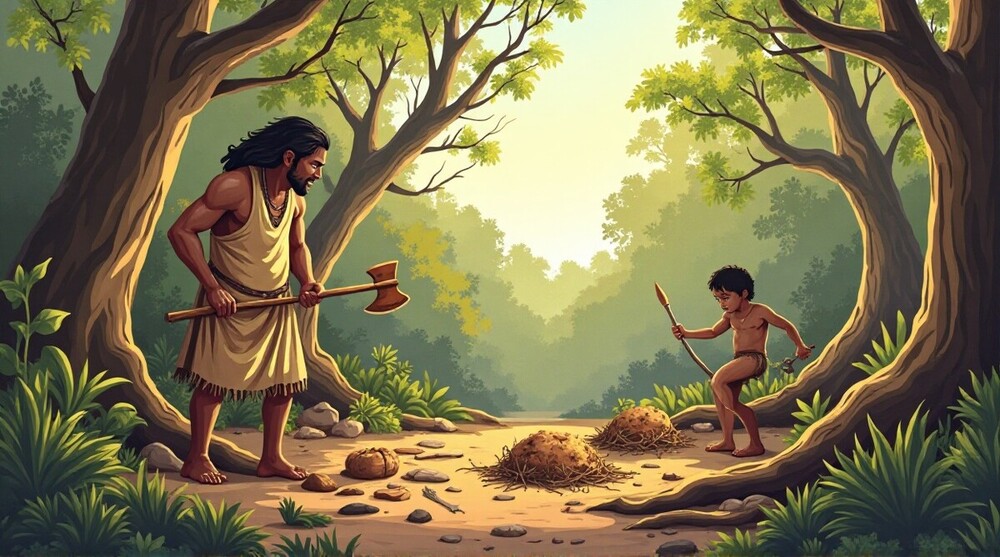



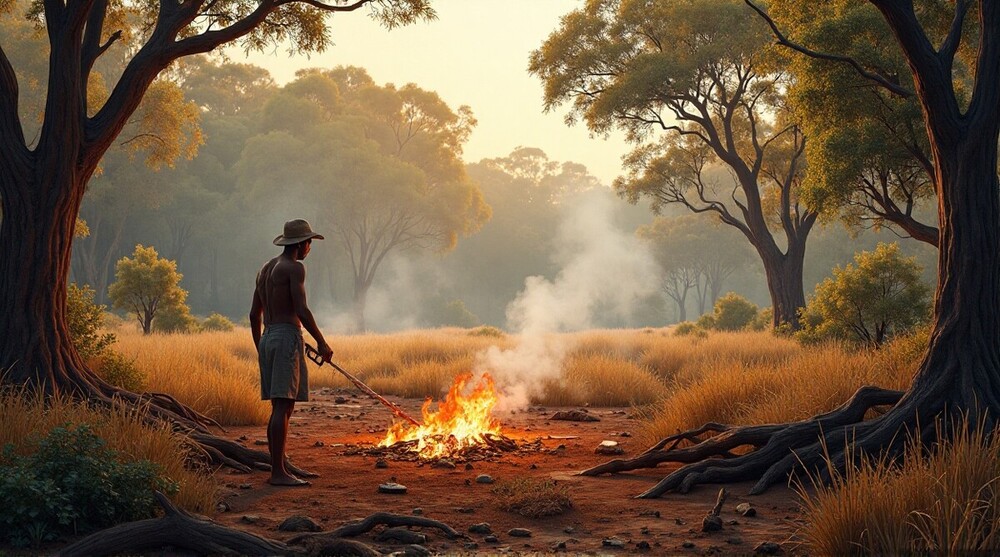


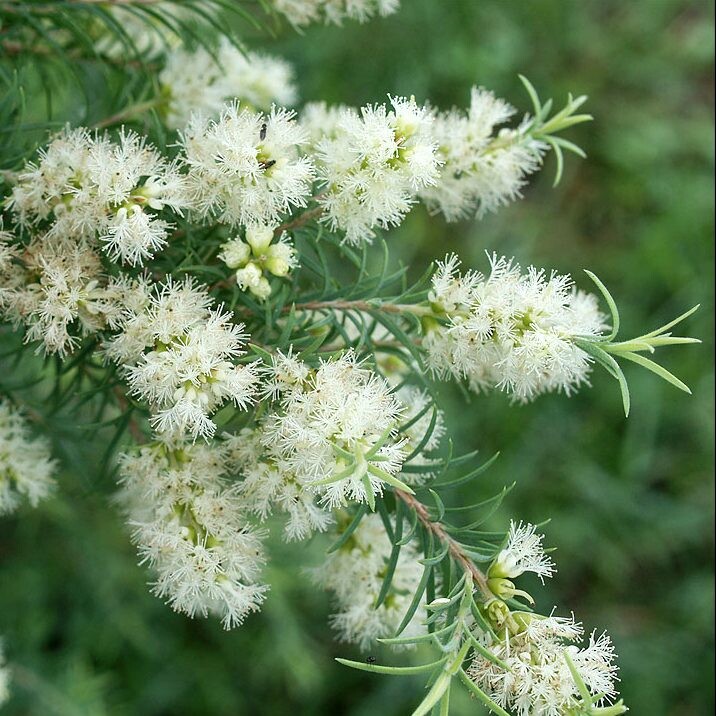


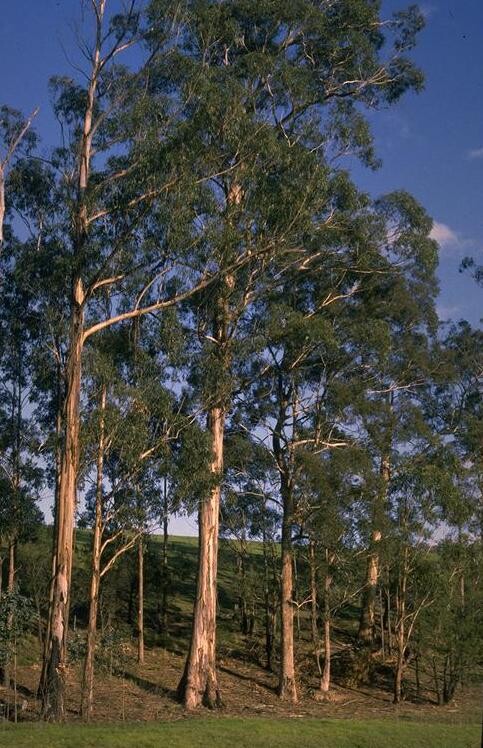

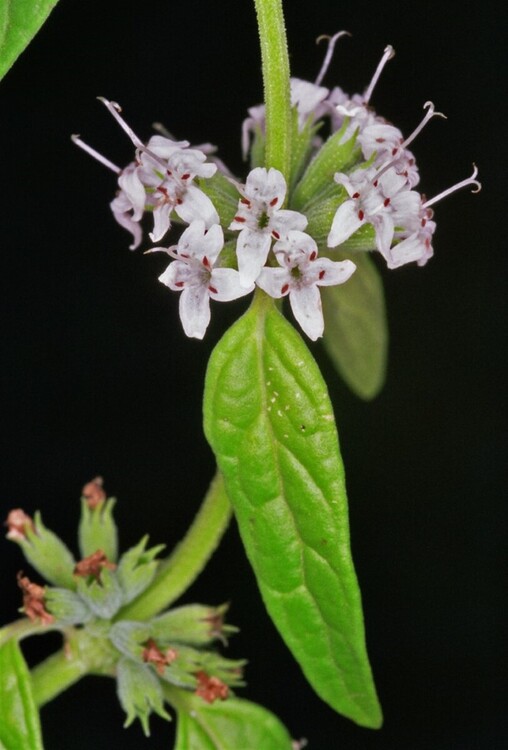

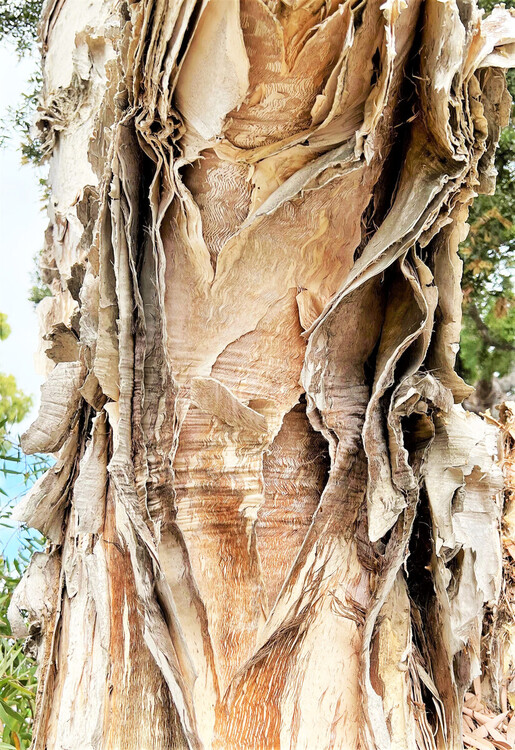

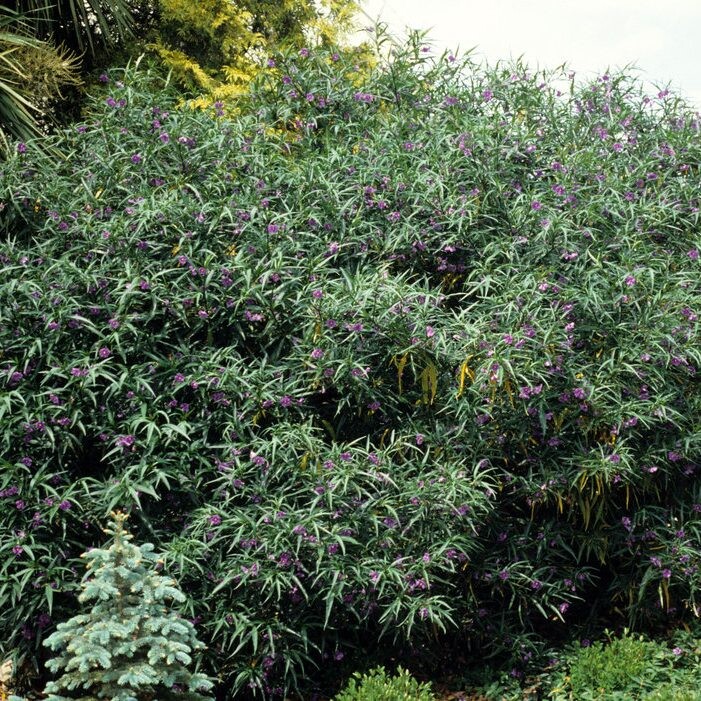


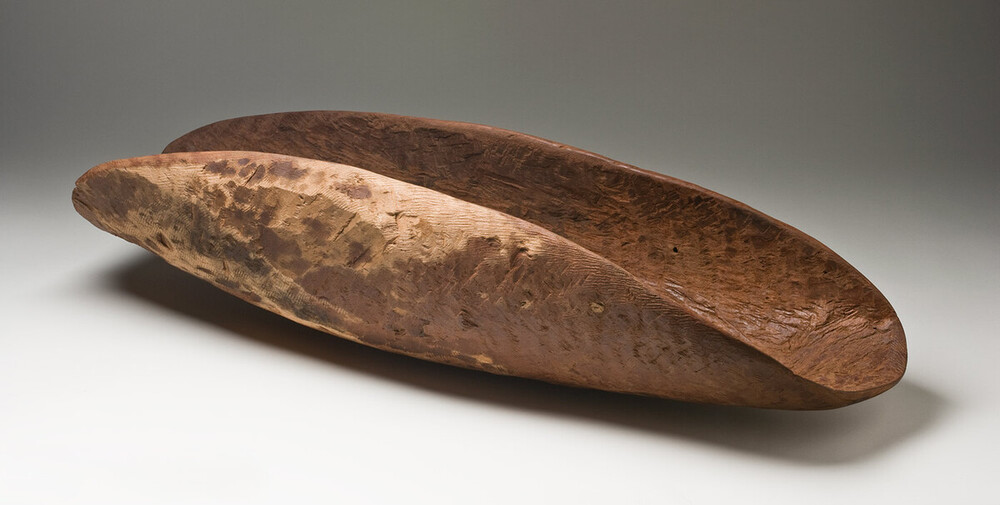
.jpg.f7fd9ec92633a09529011f58bf49496a.jpg)
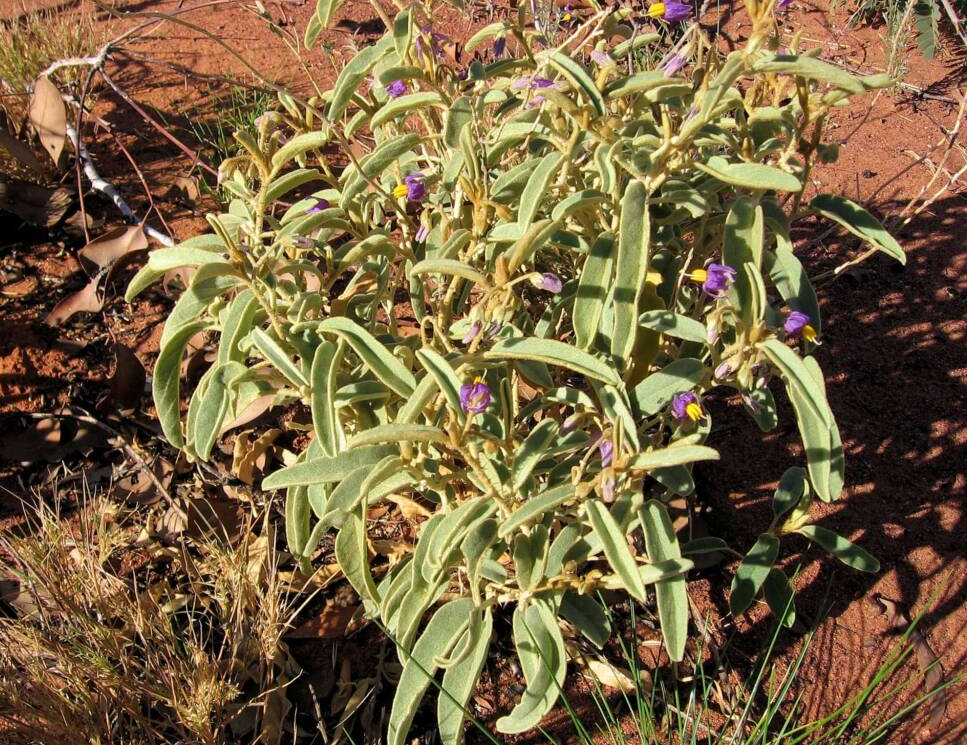
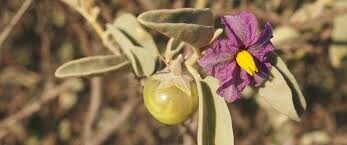
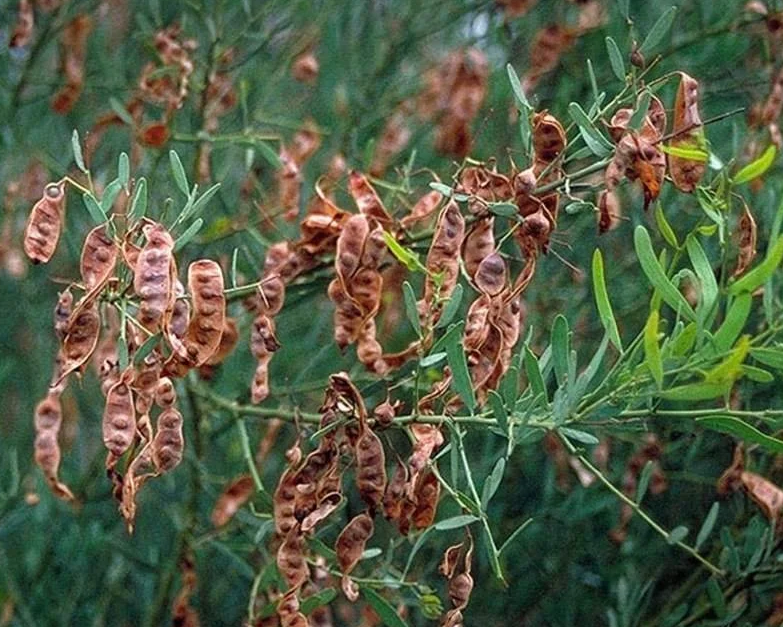

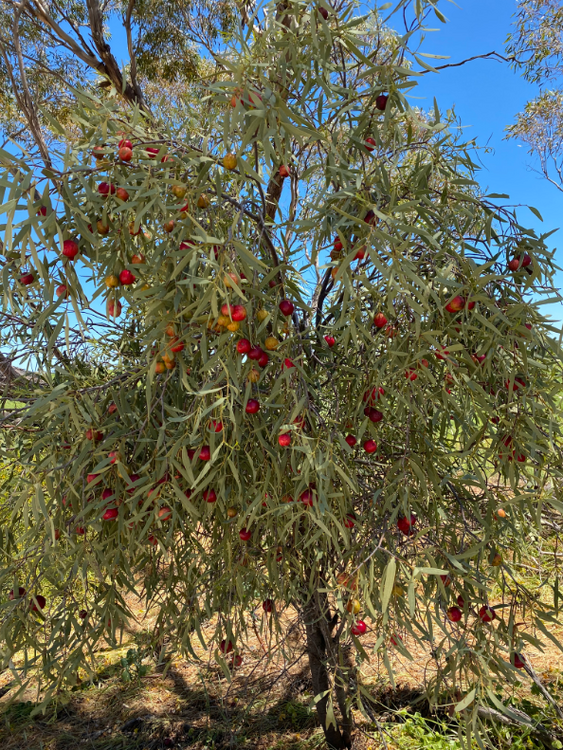
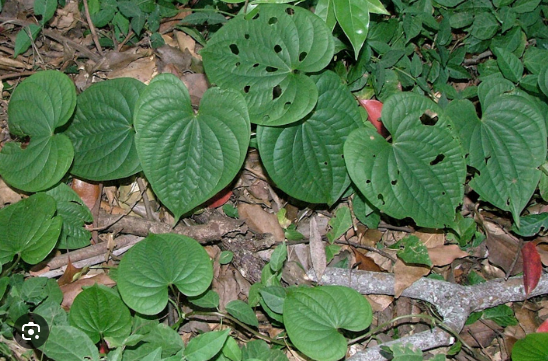
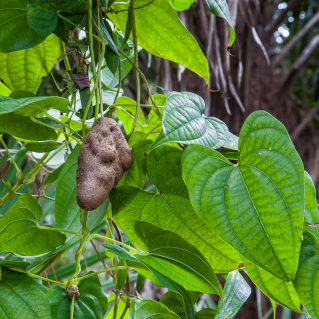
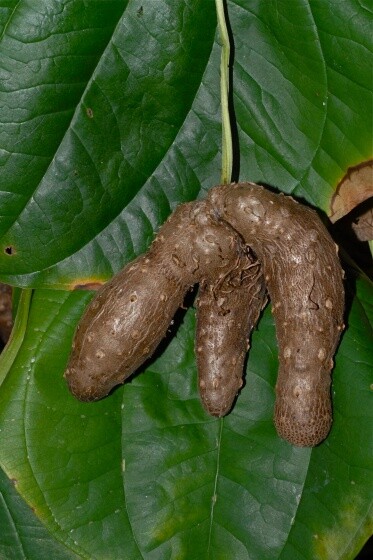
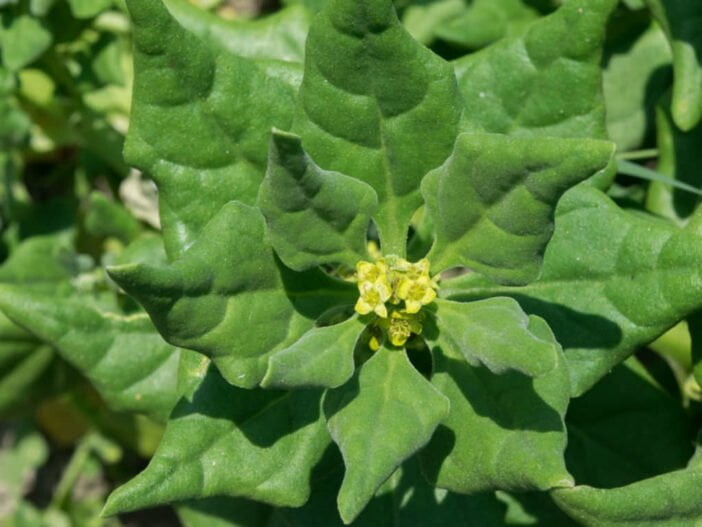
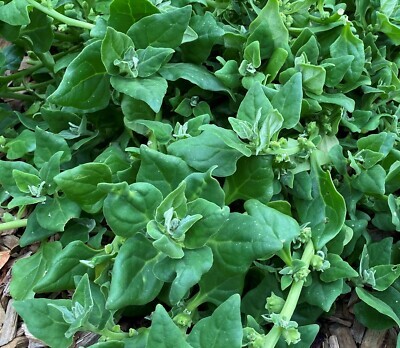

.thumb.jpg.892a4b4e30f5ece985fcc533c895cbe3.jpg)
